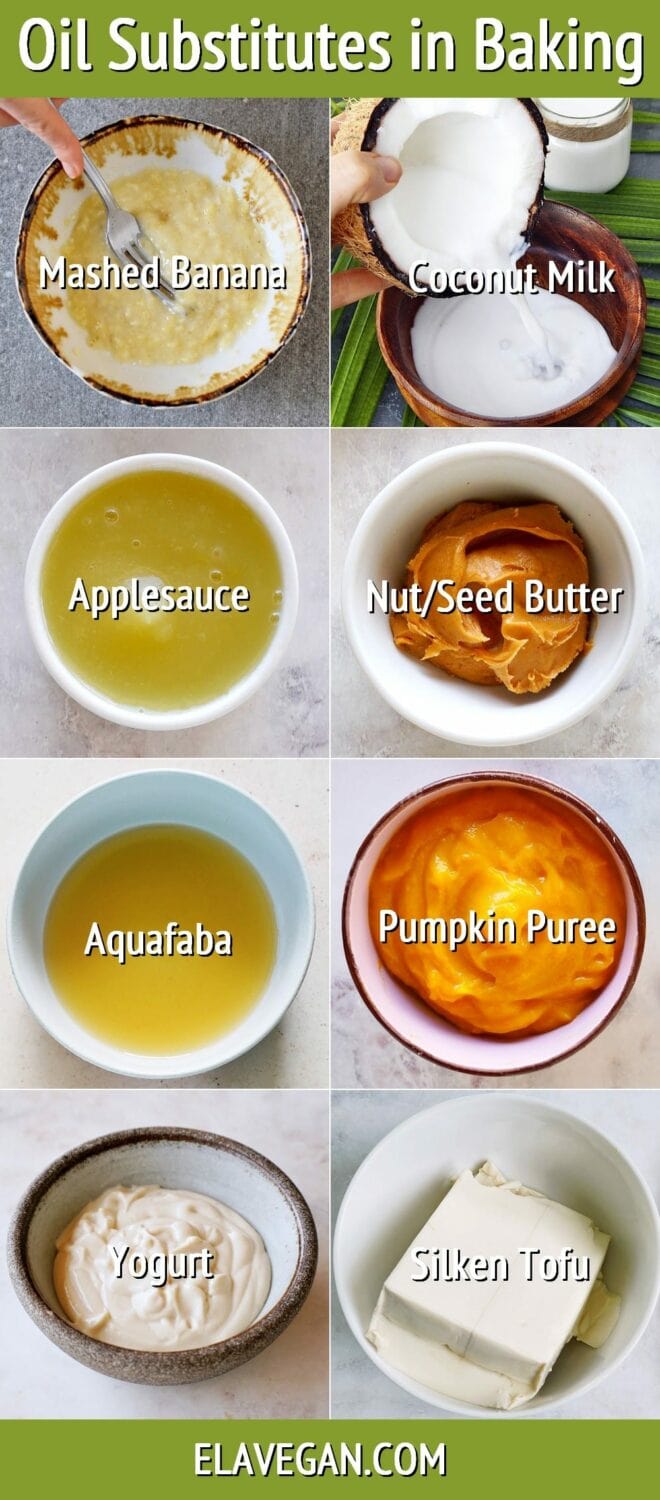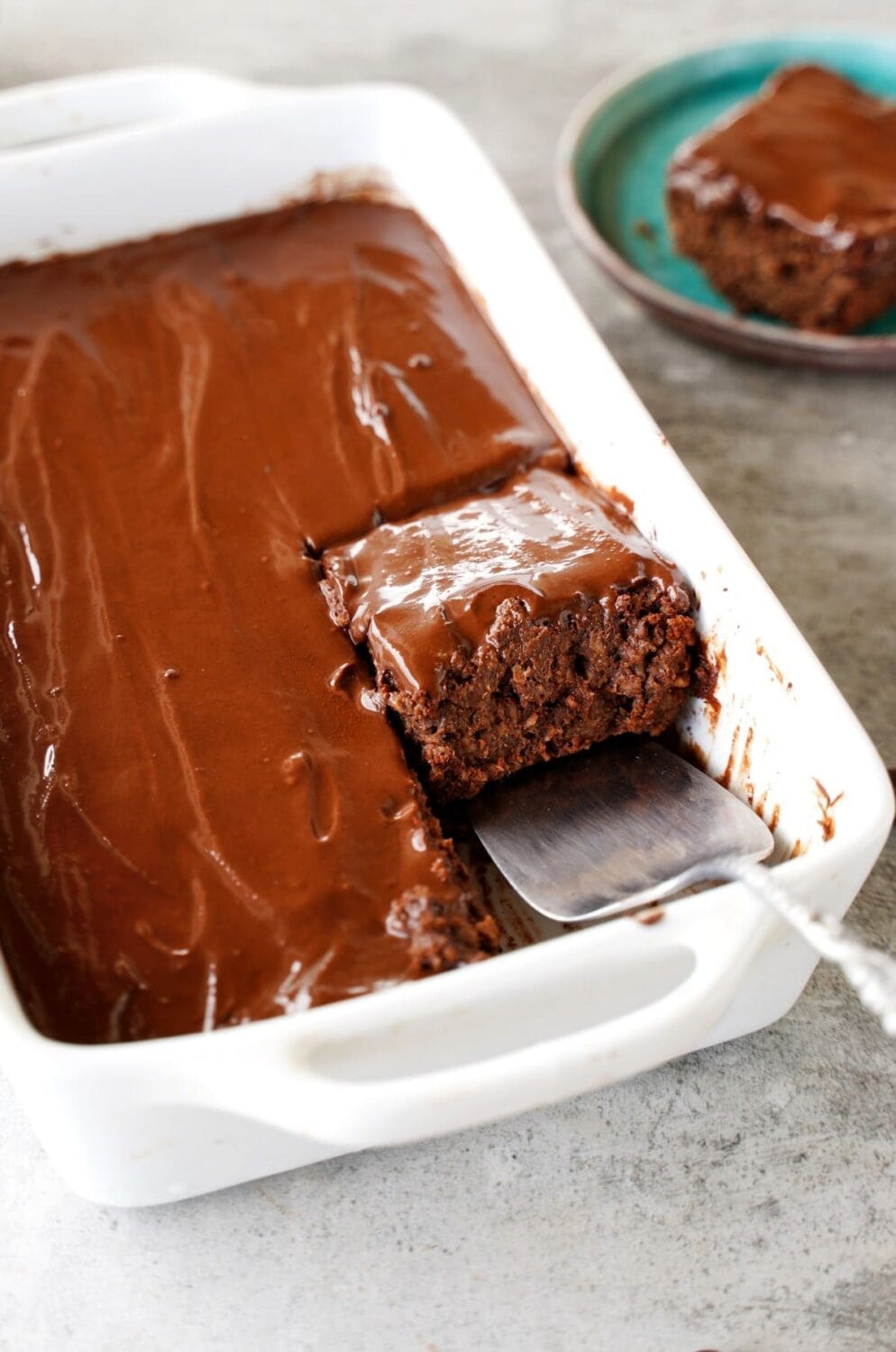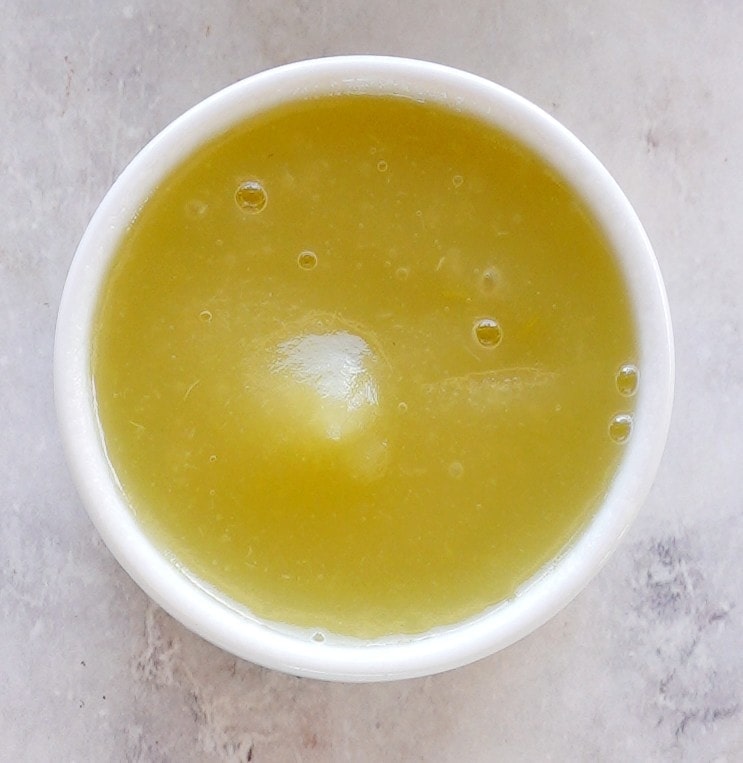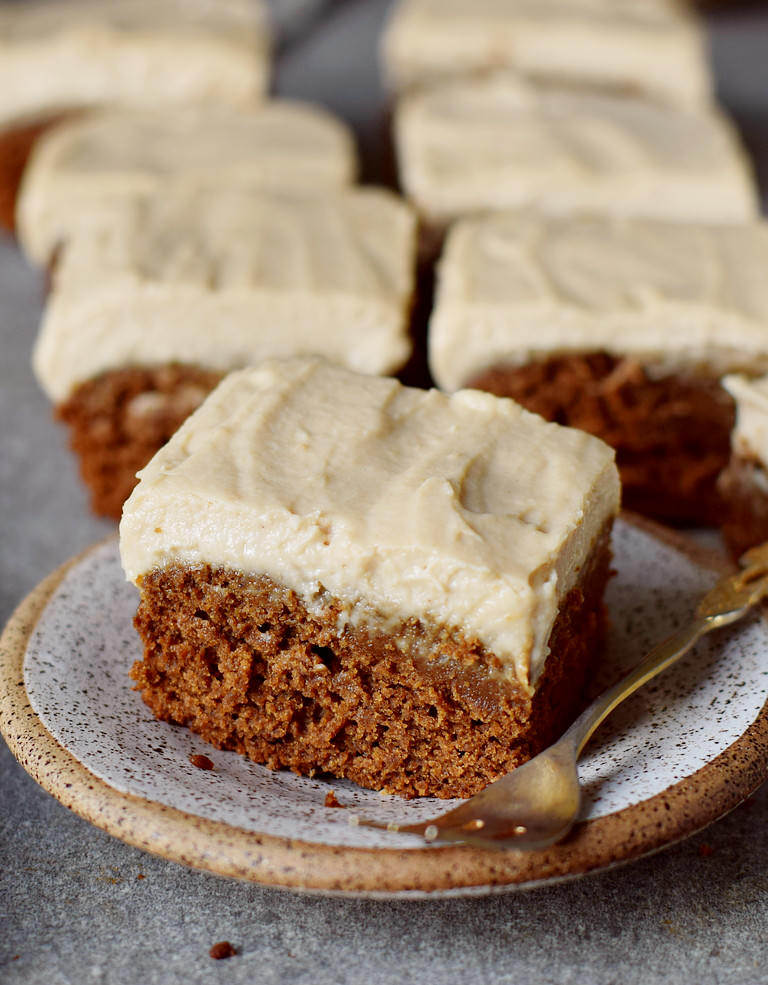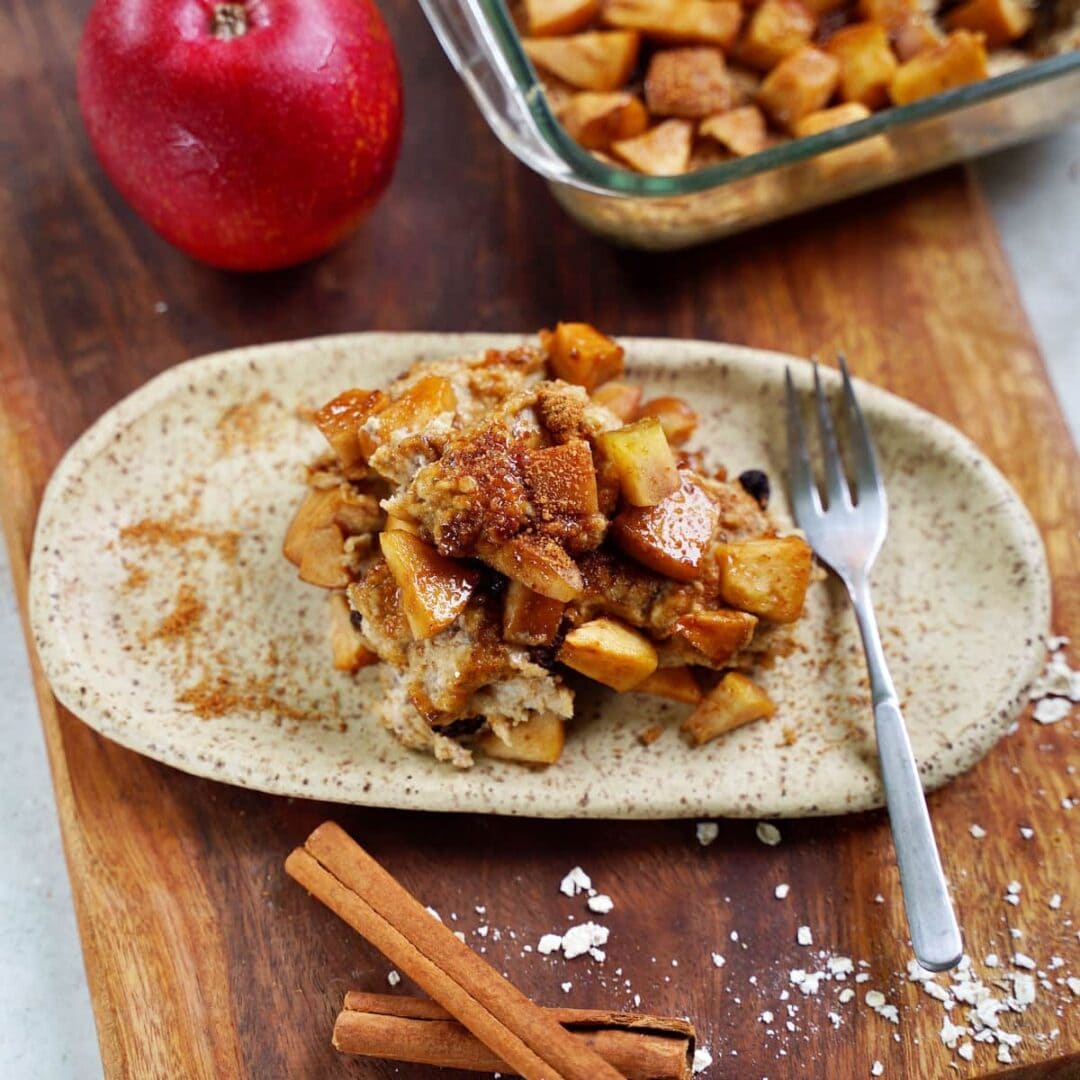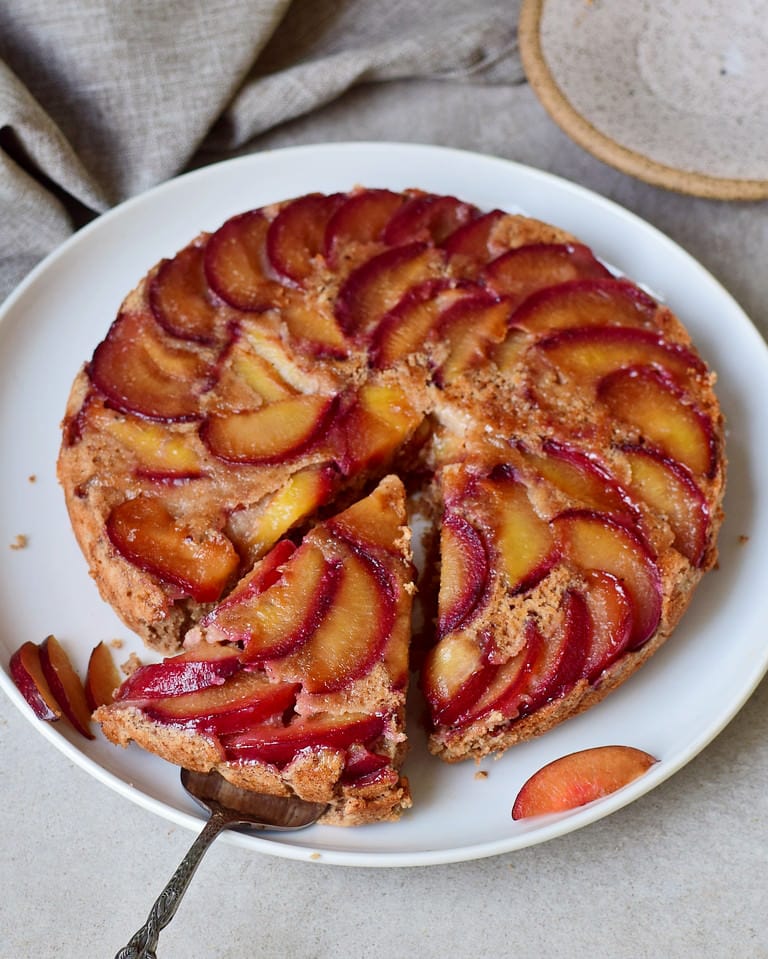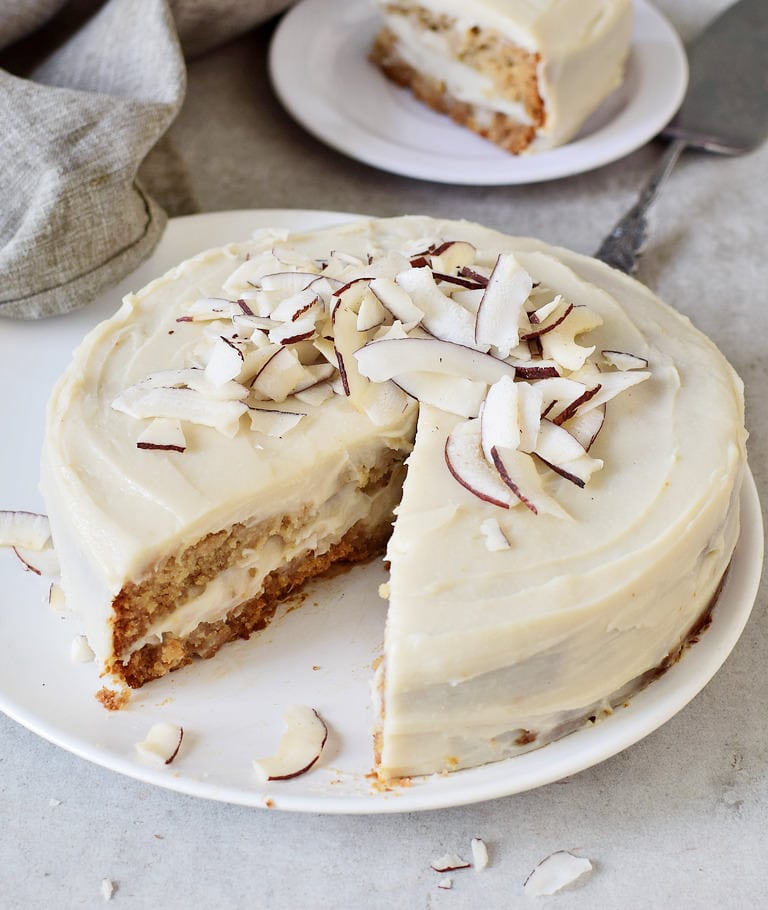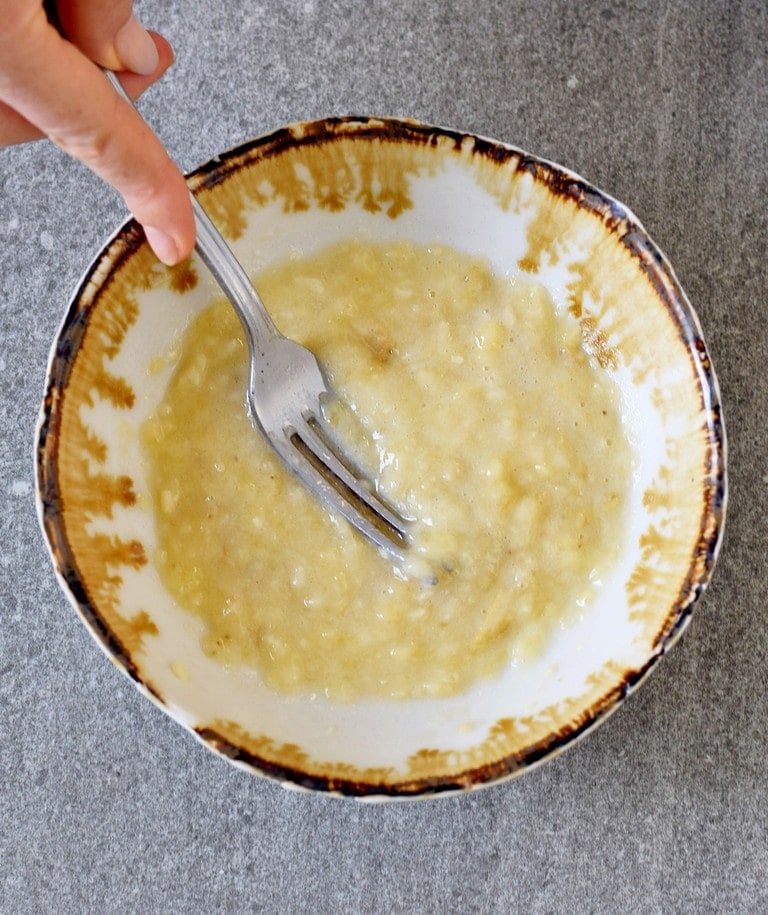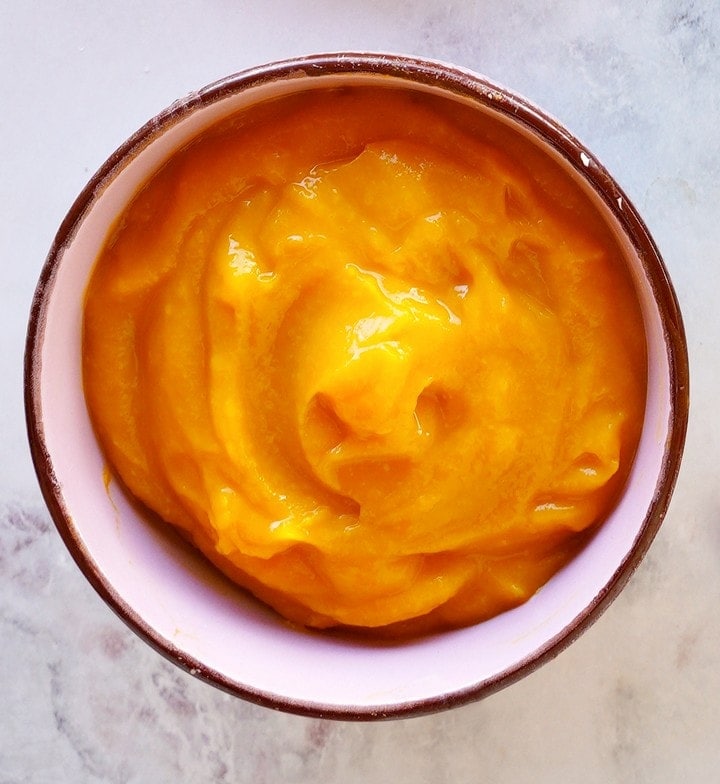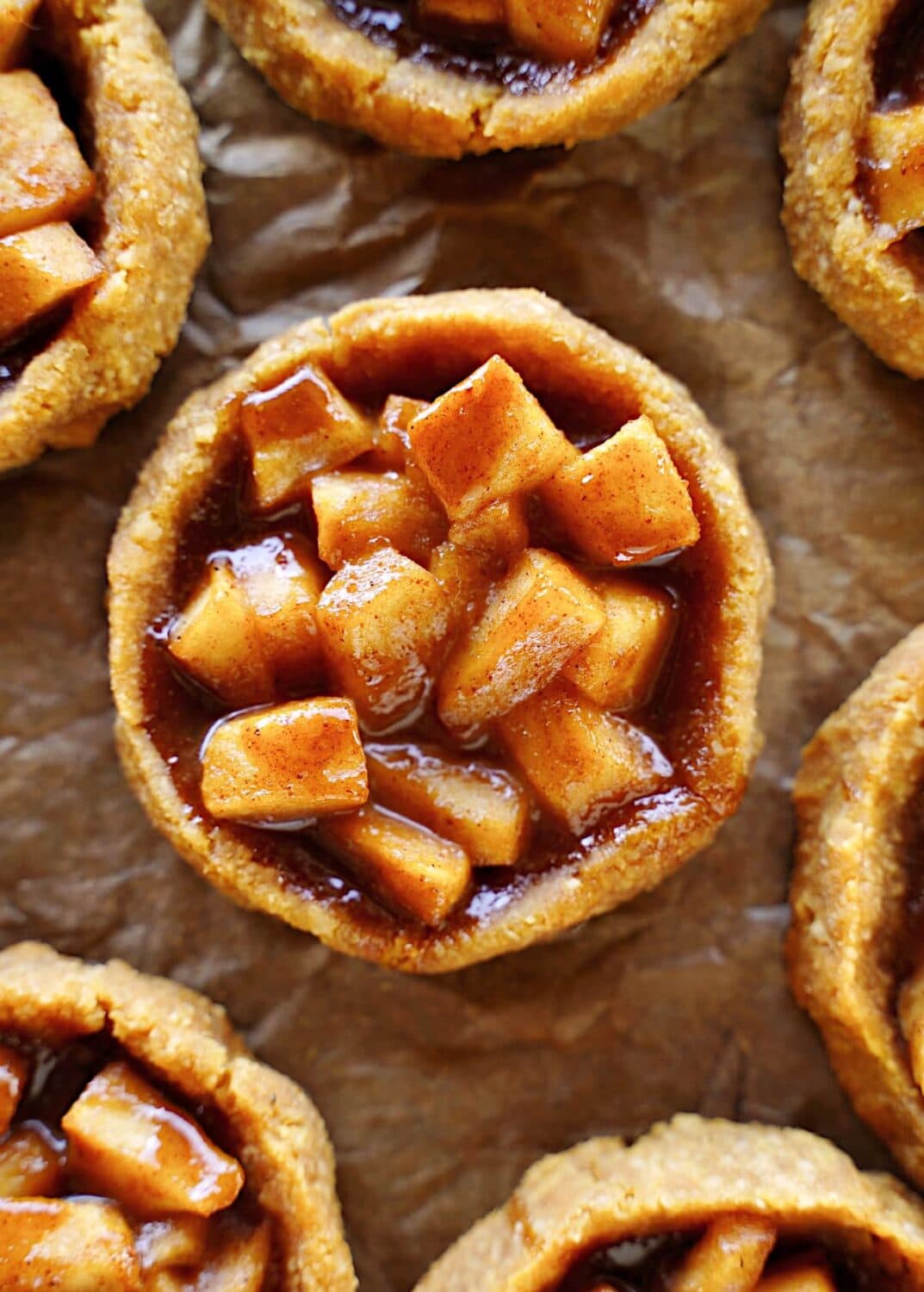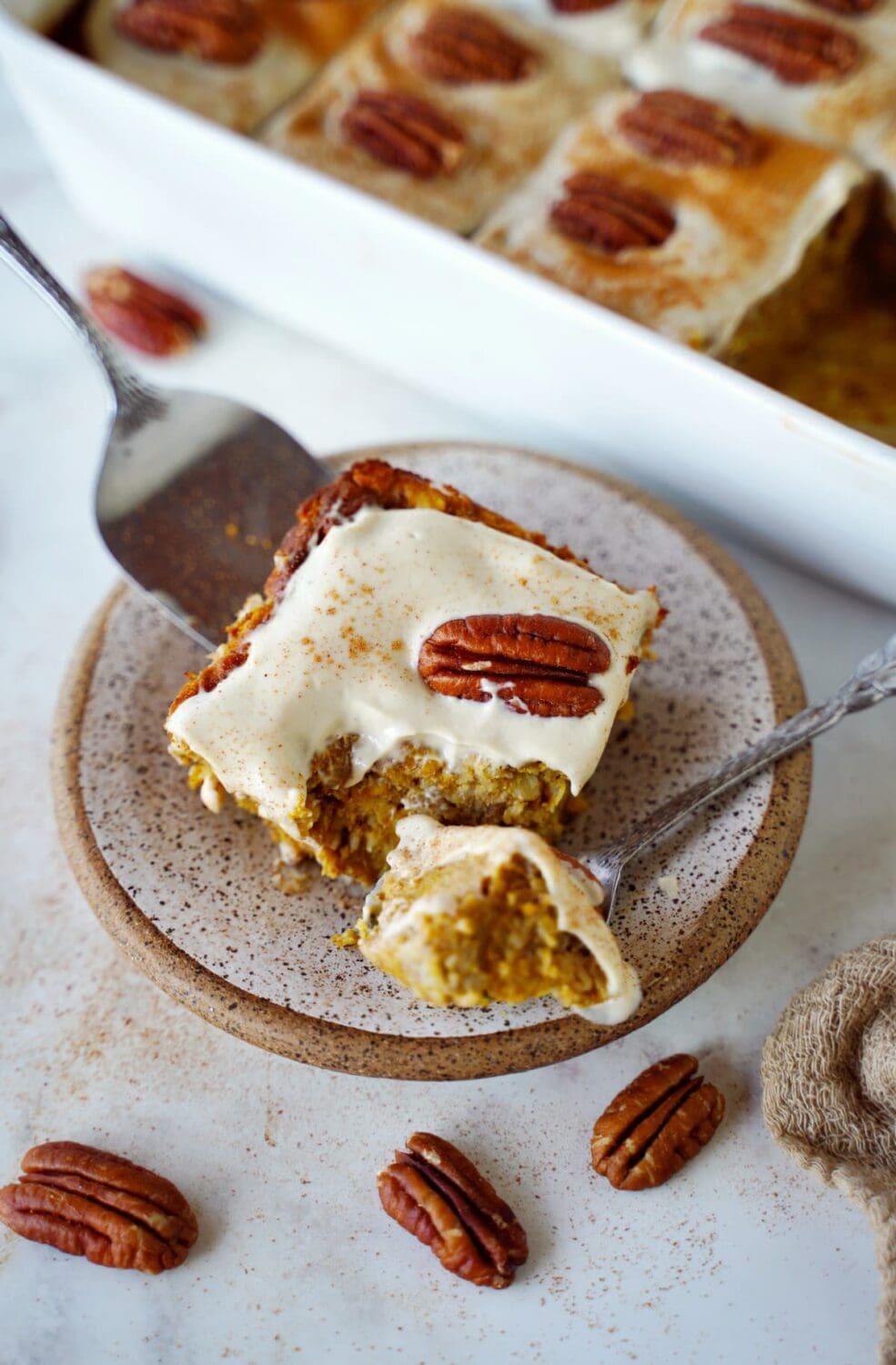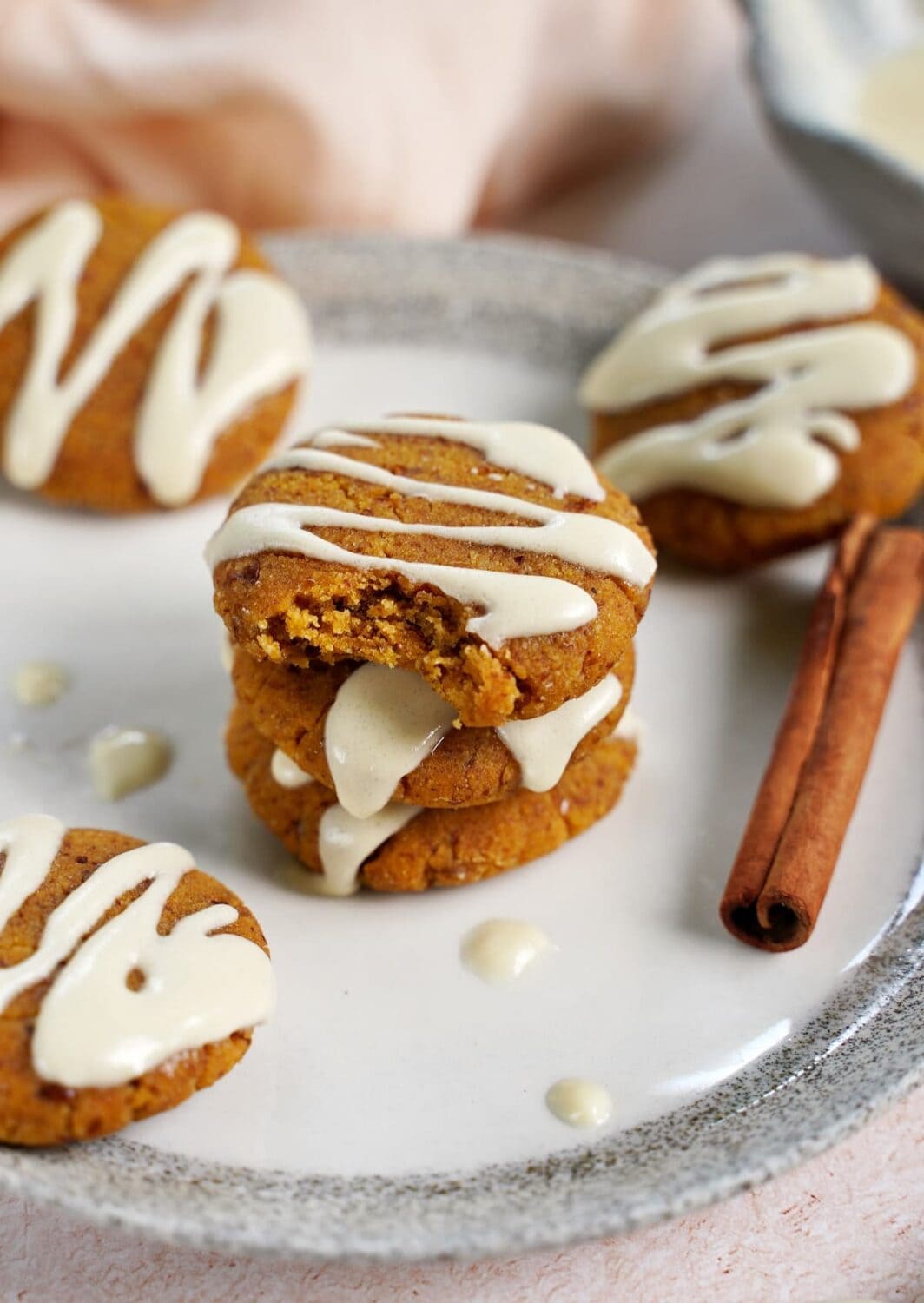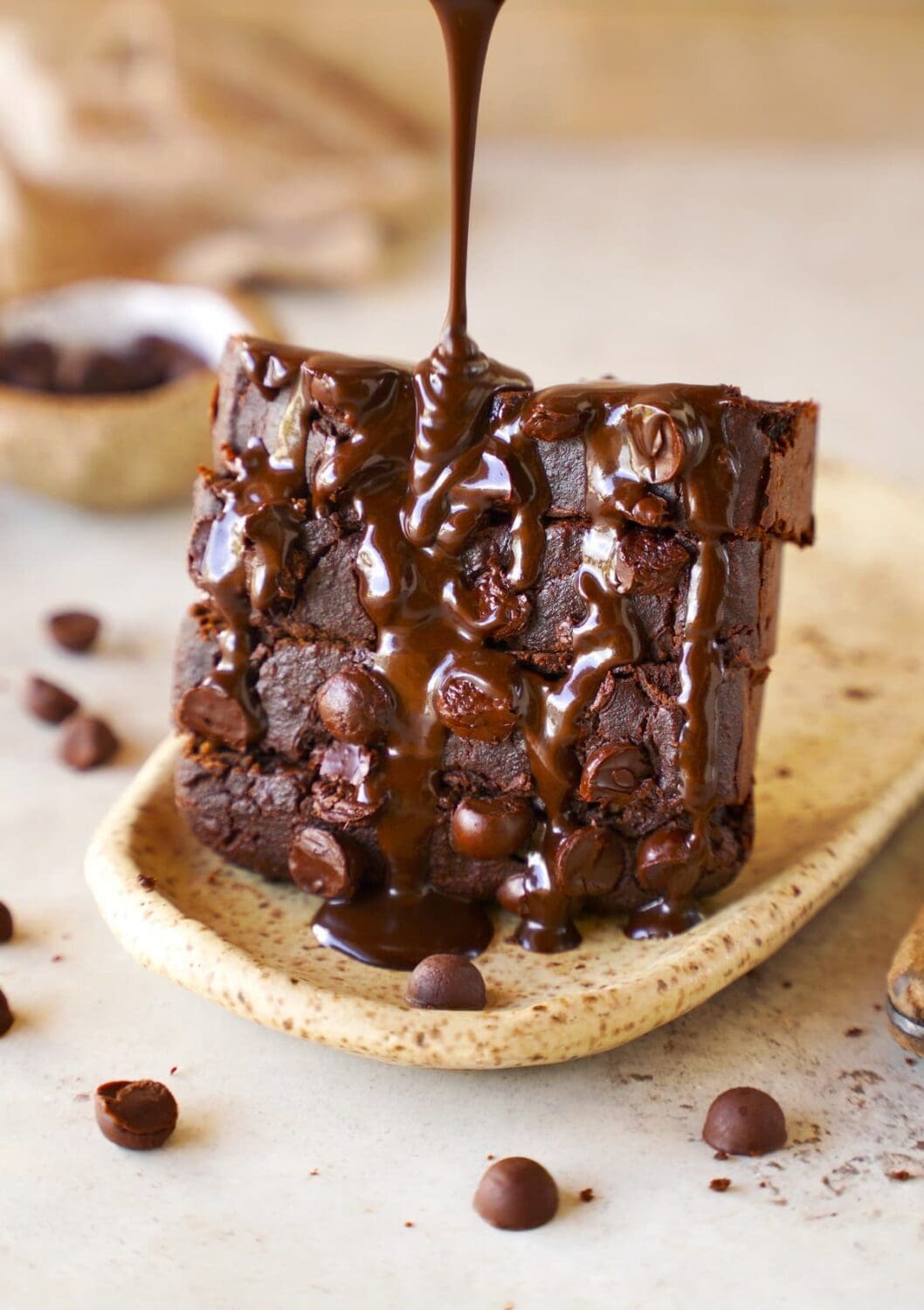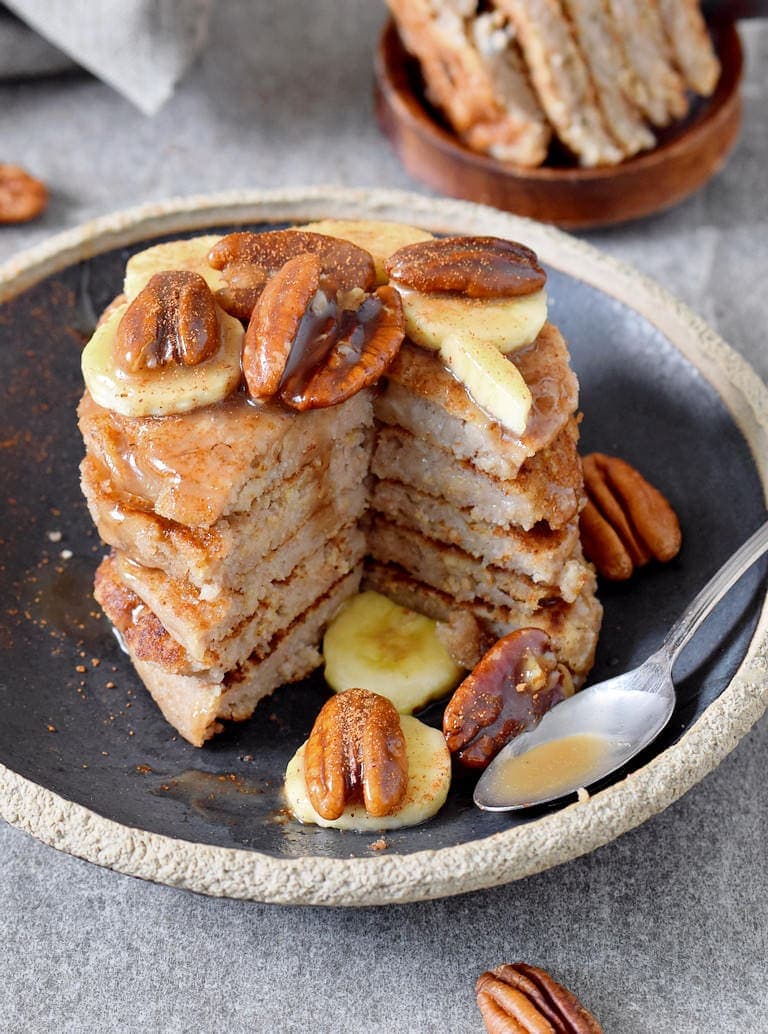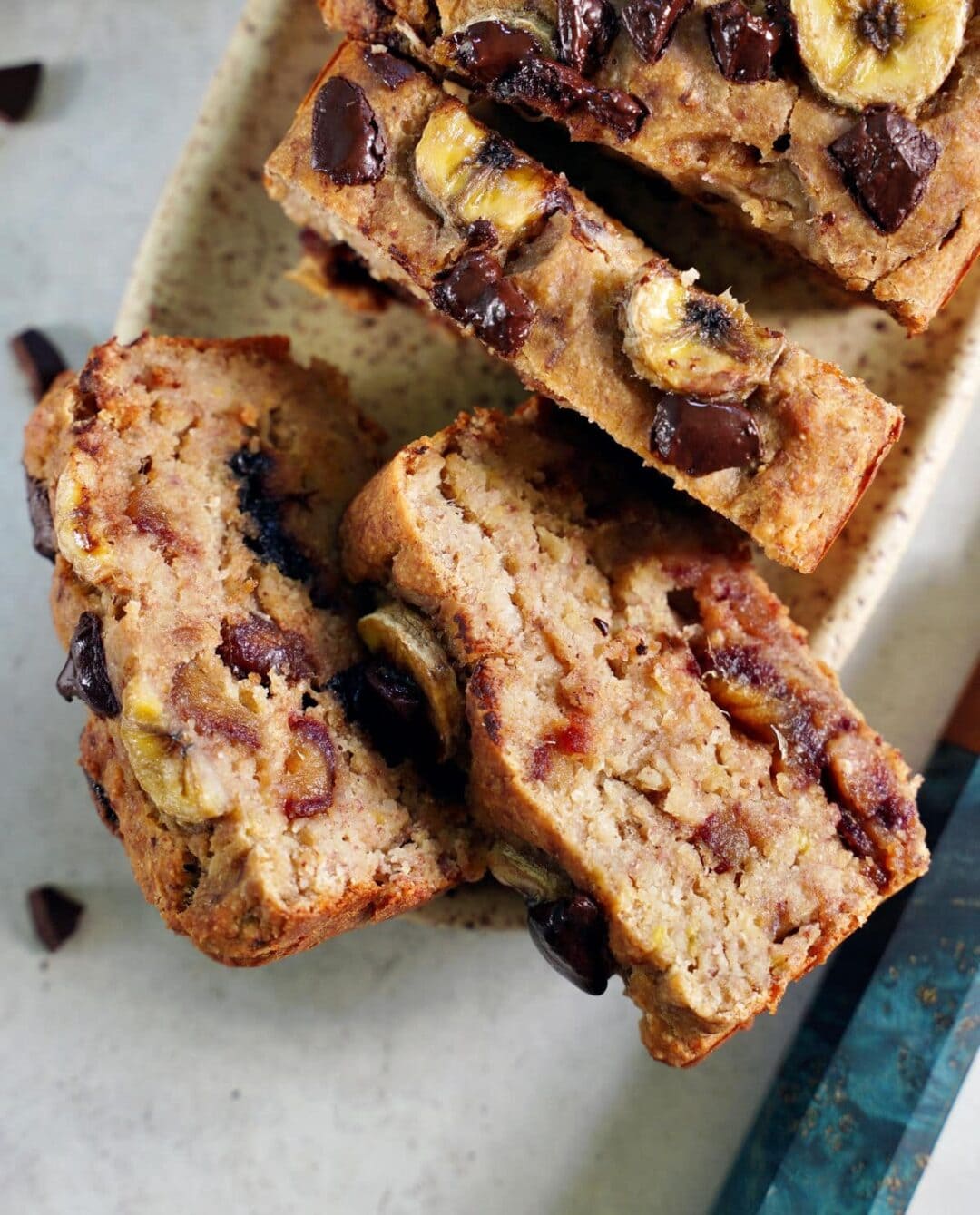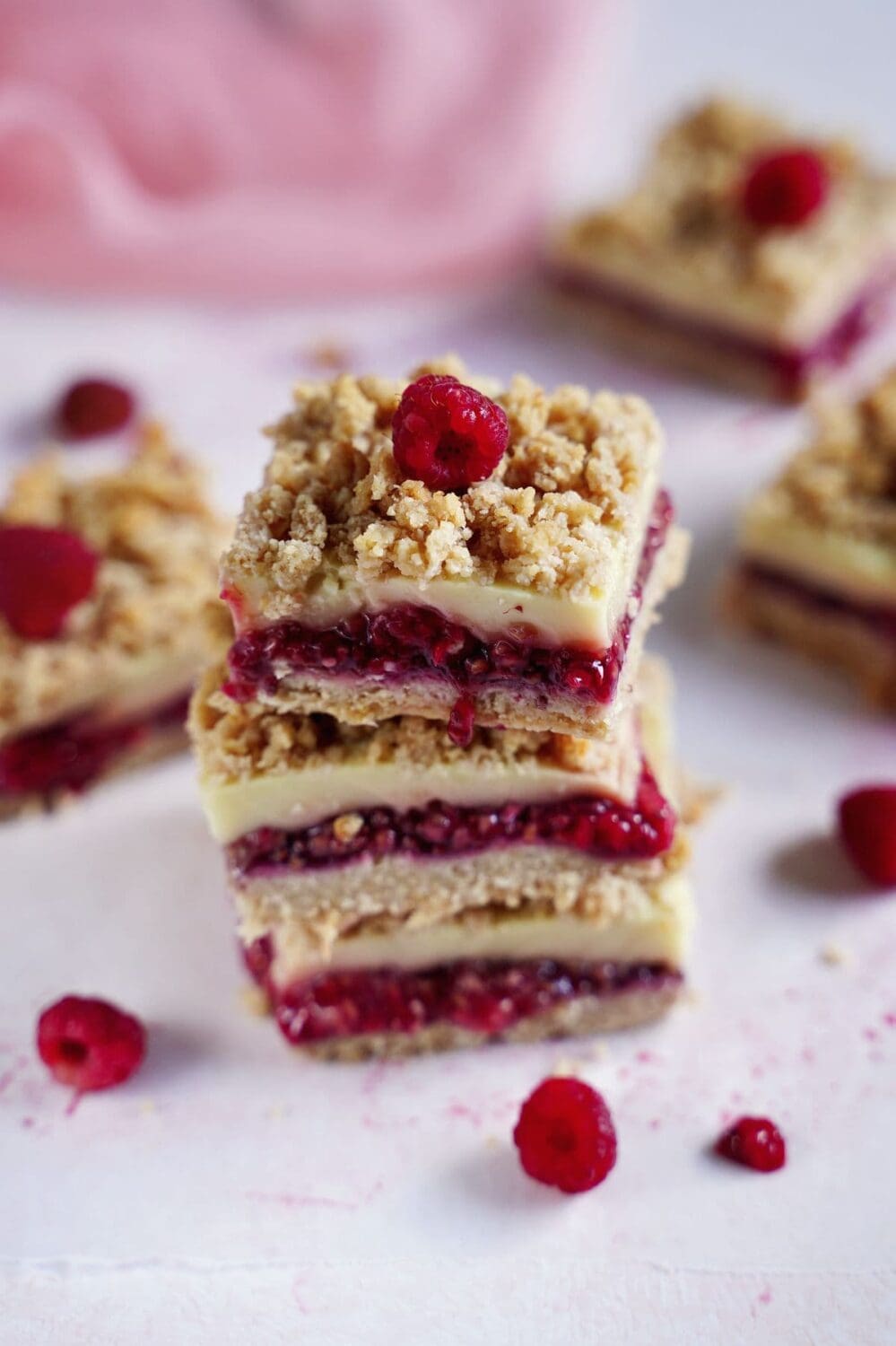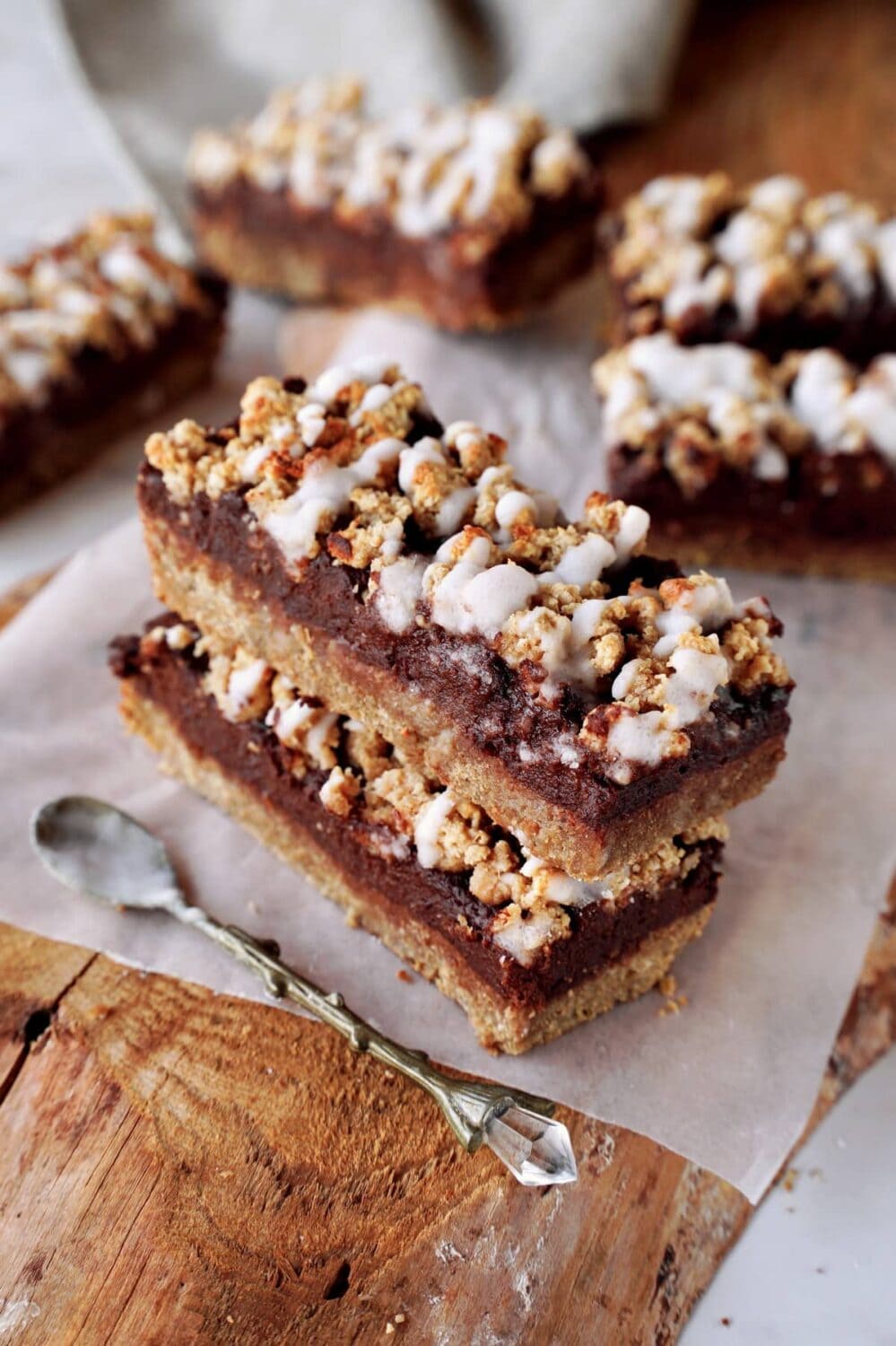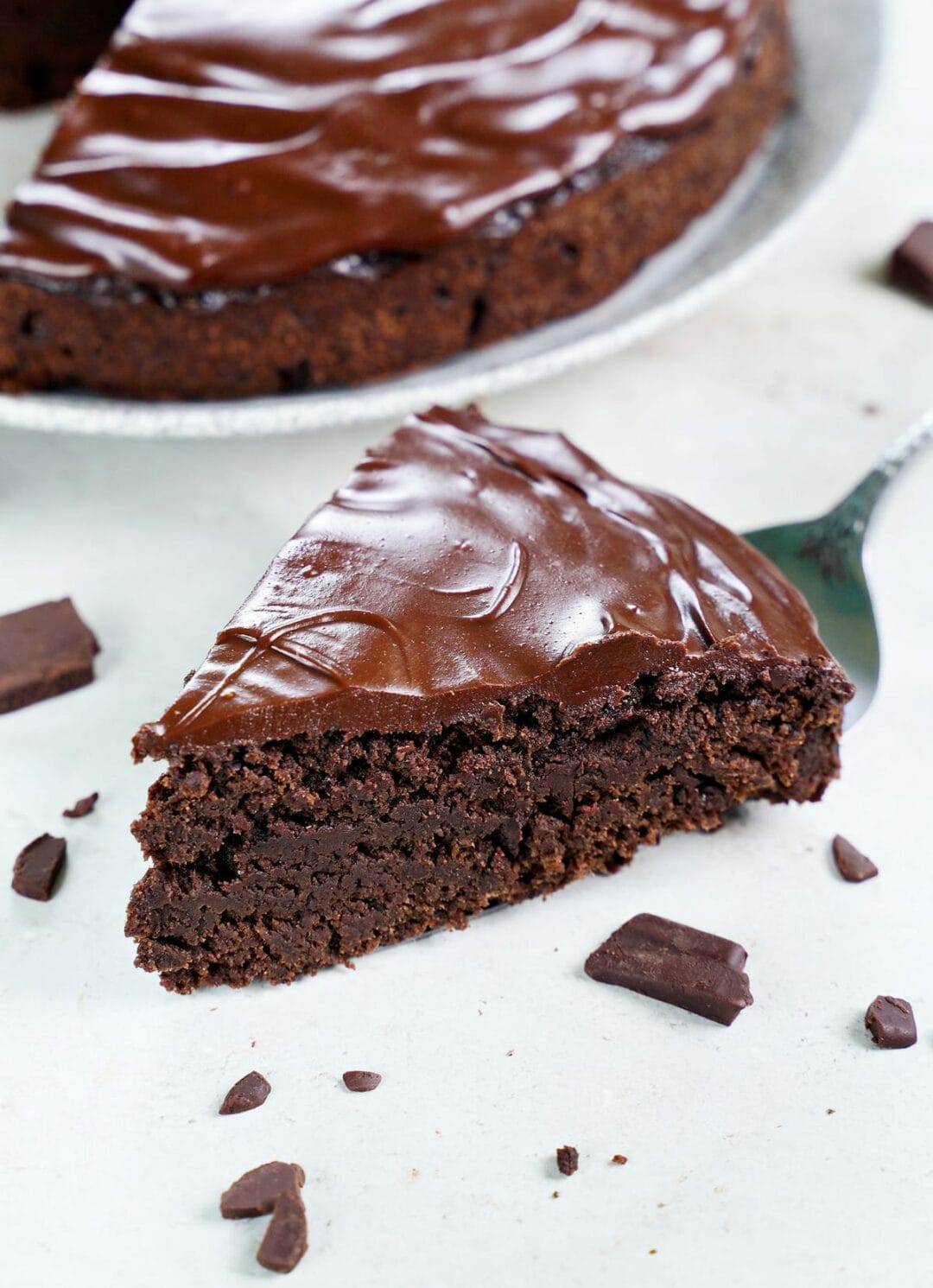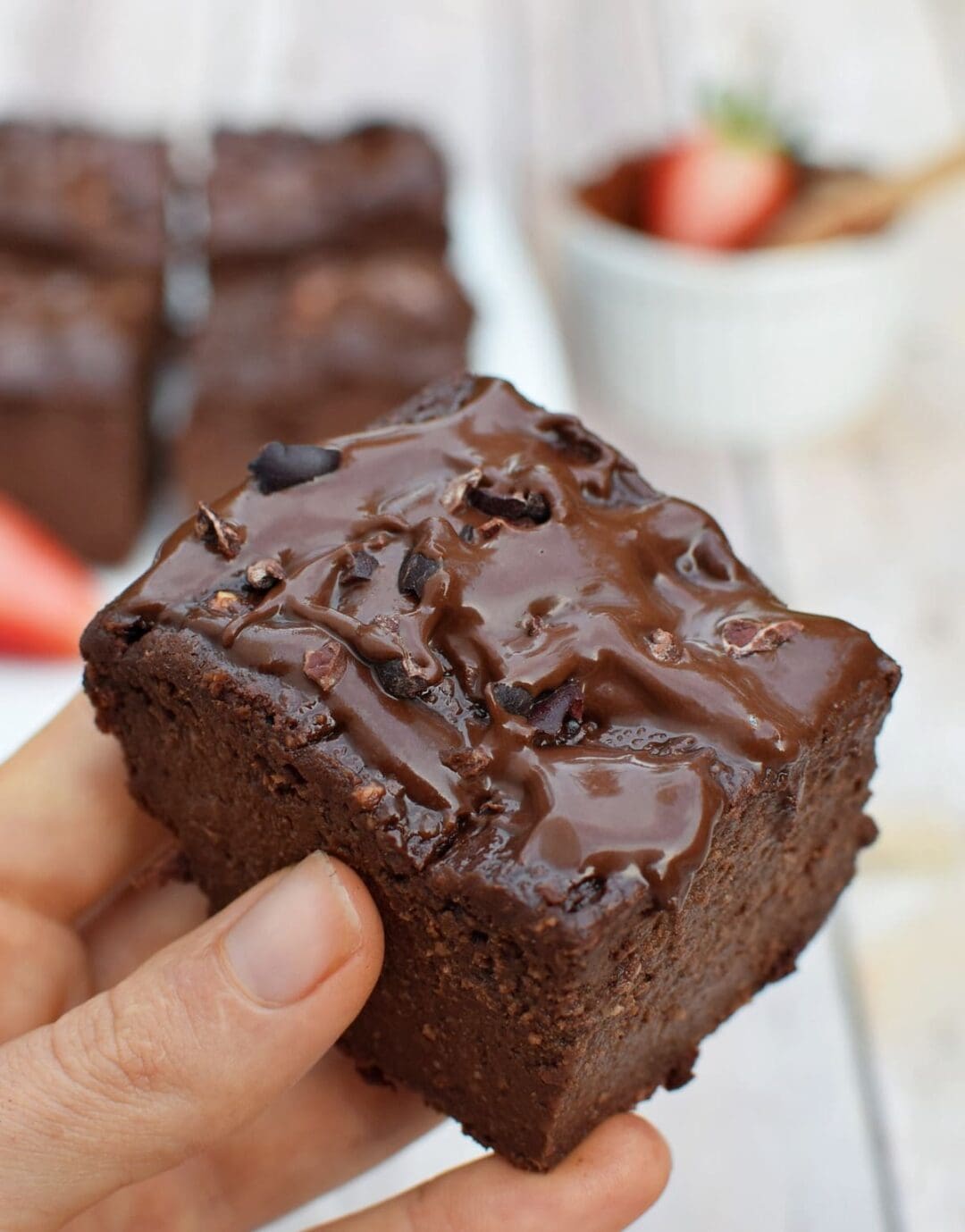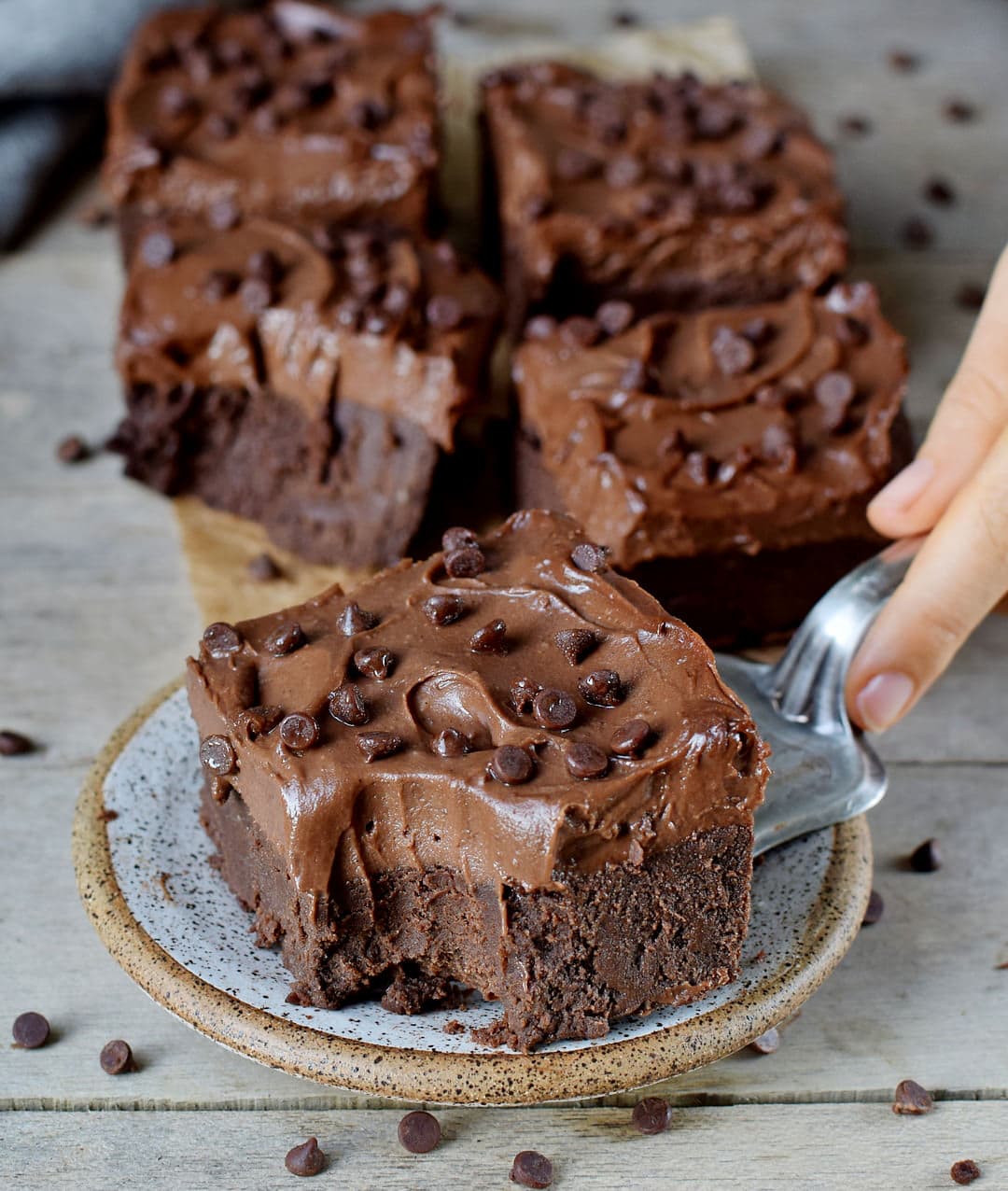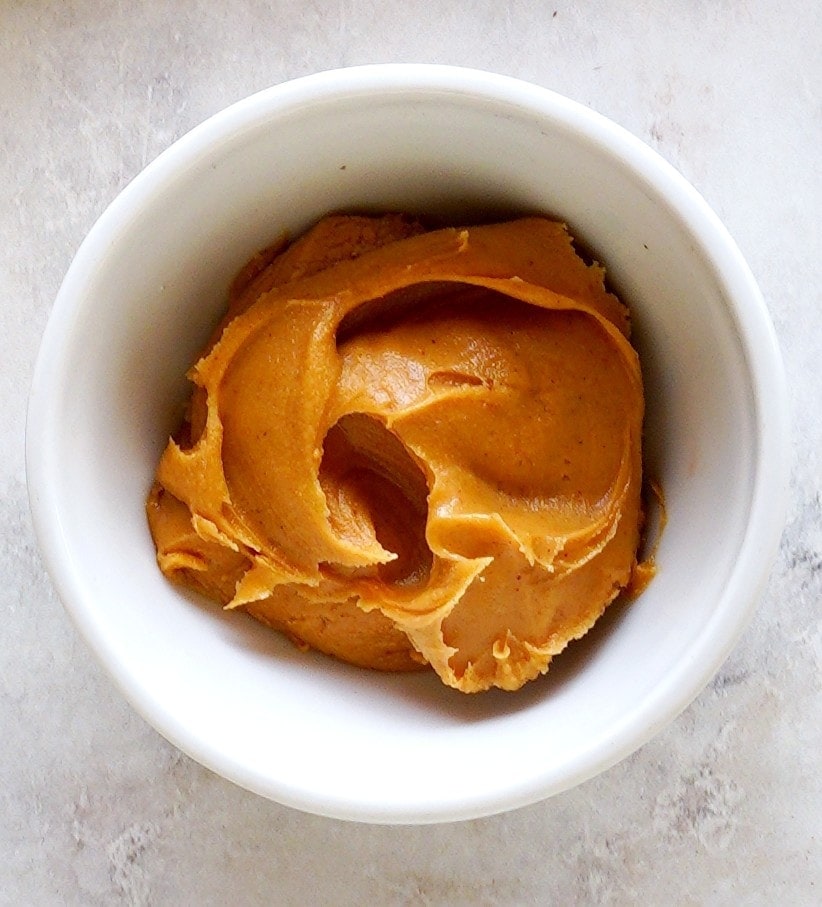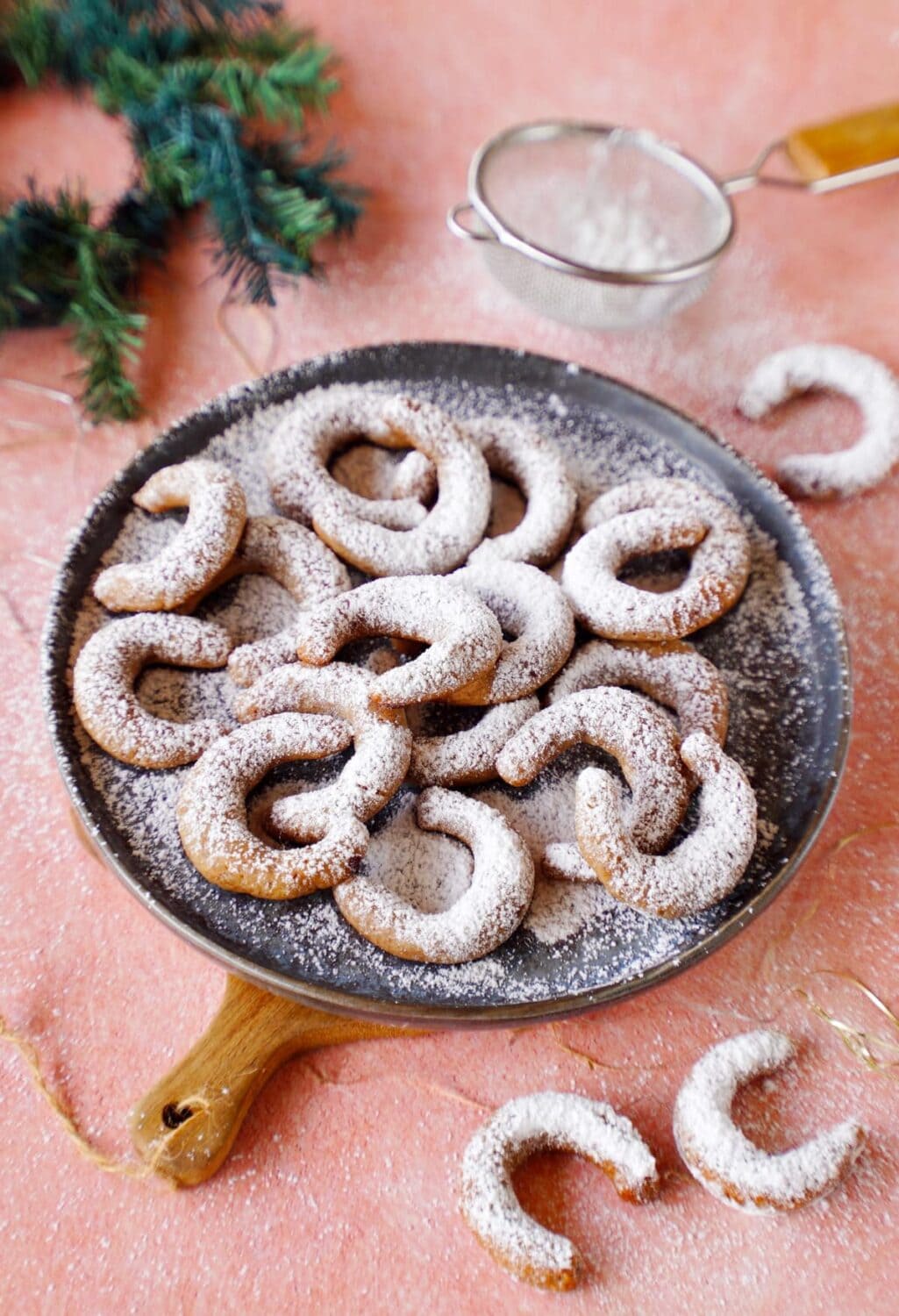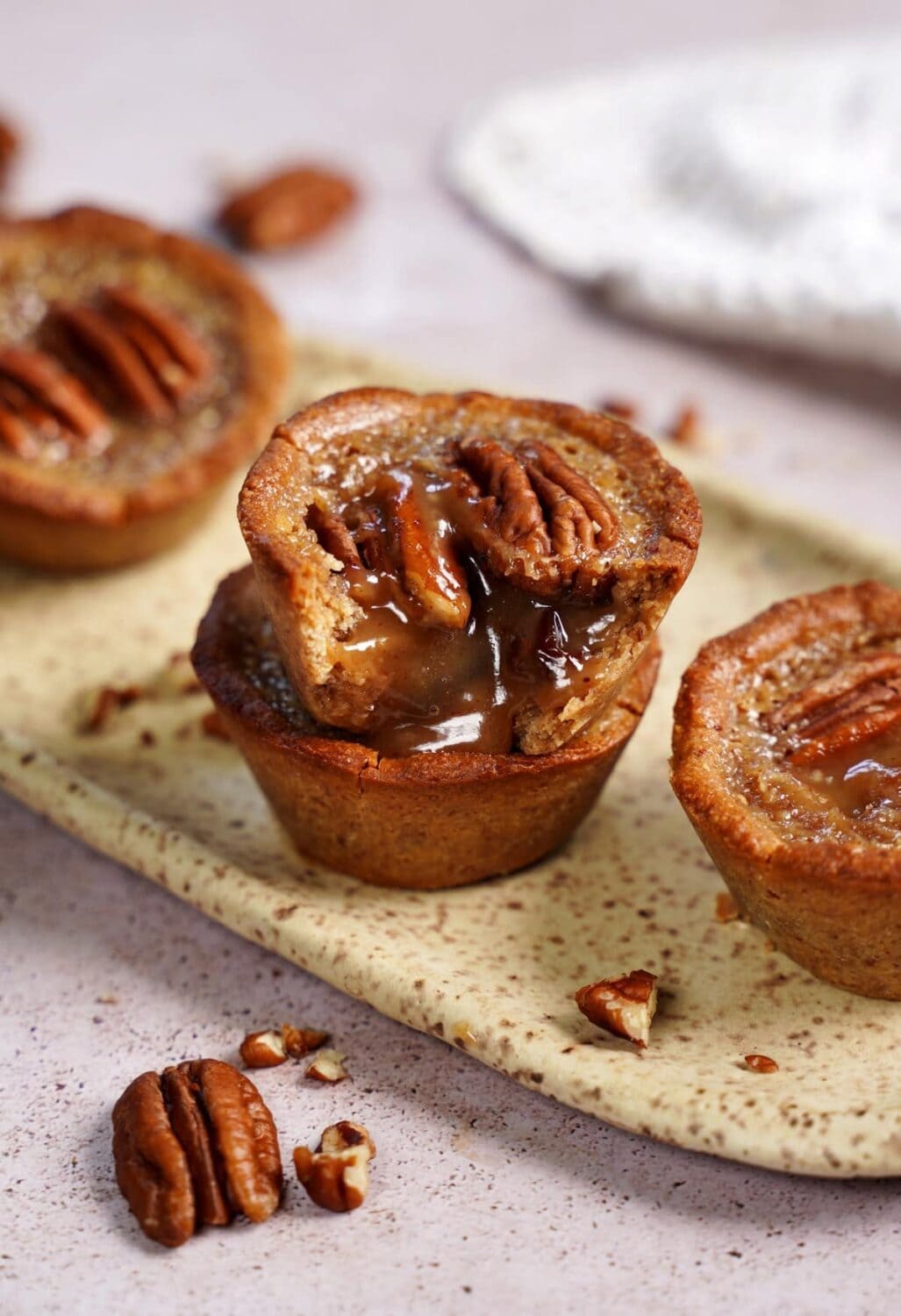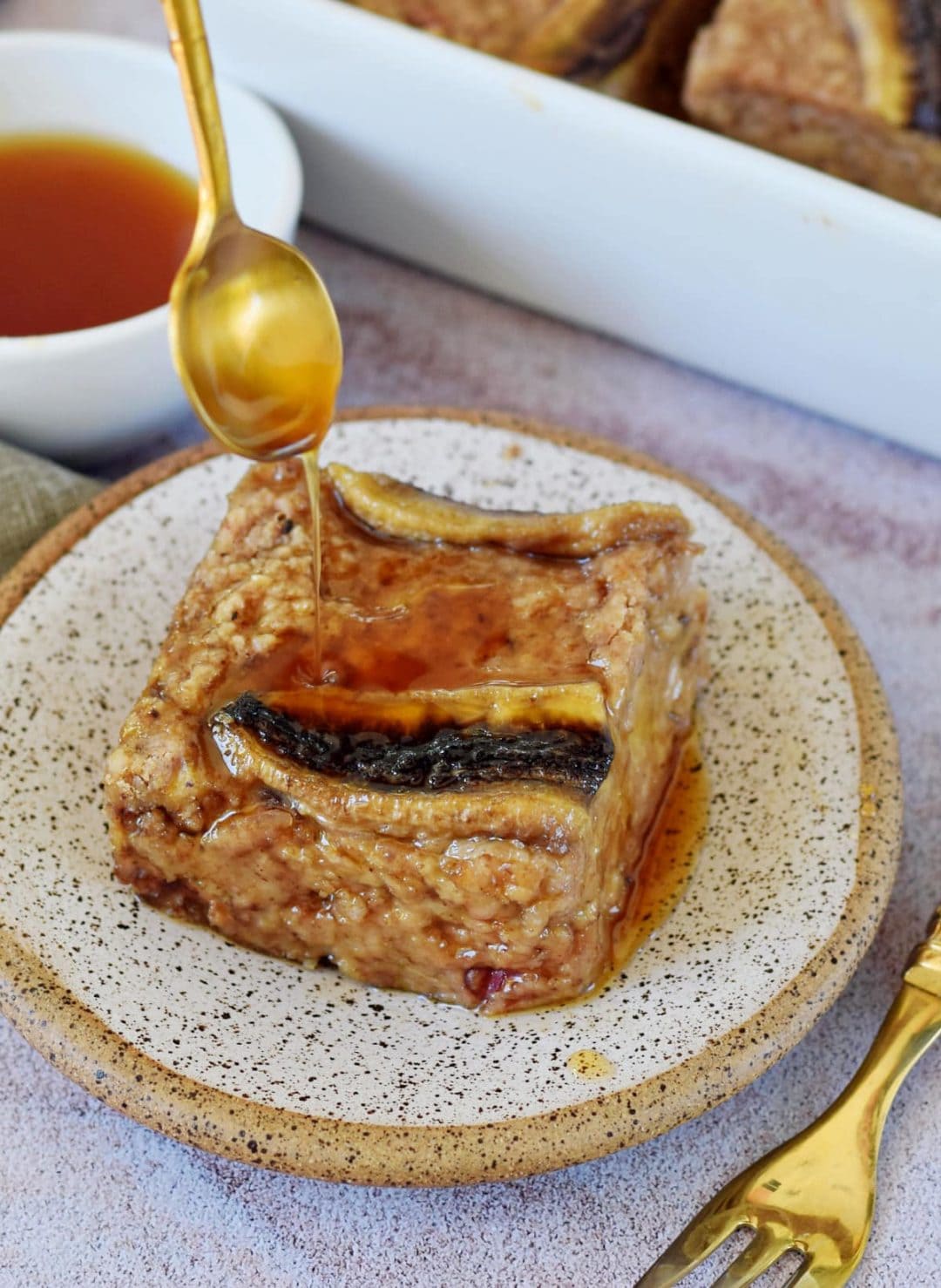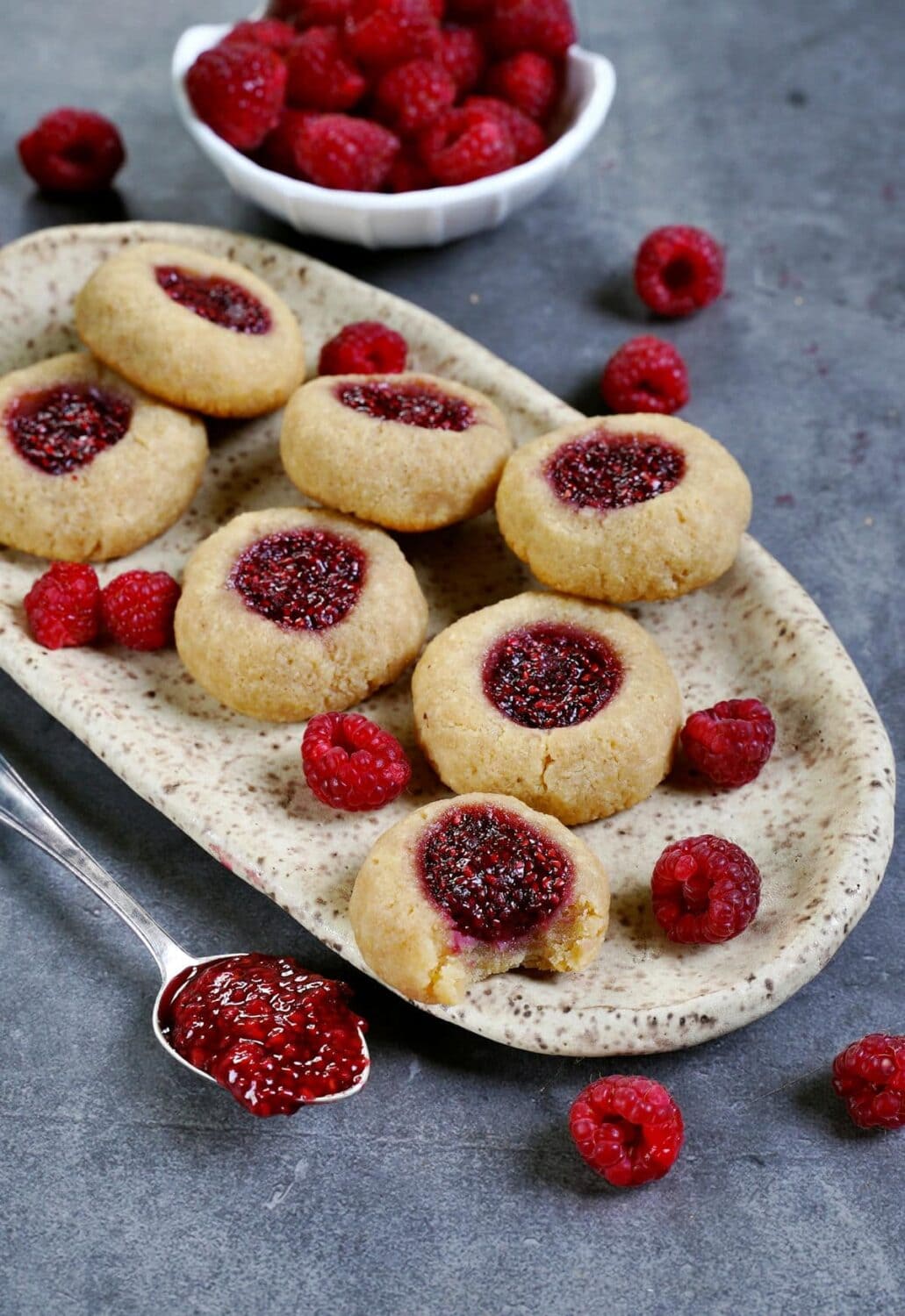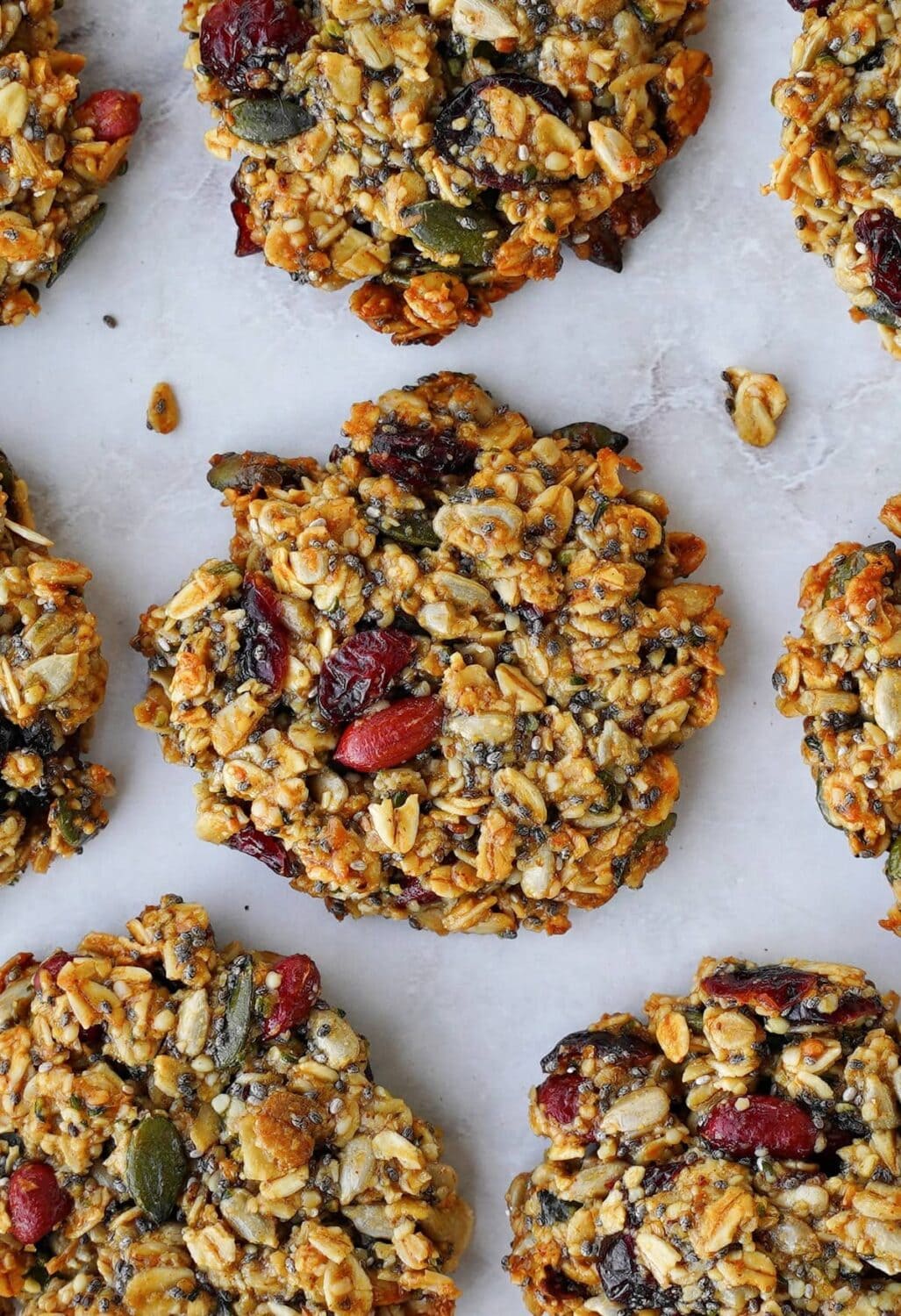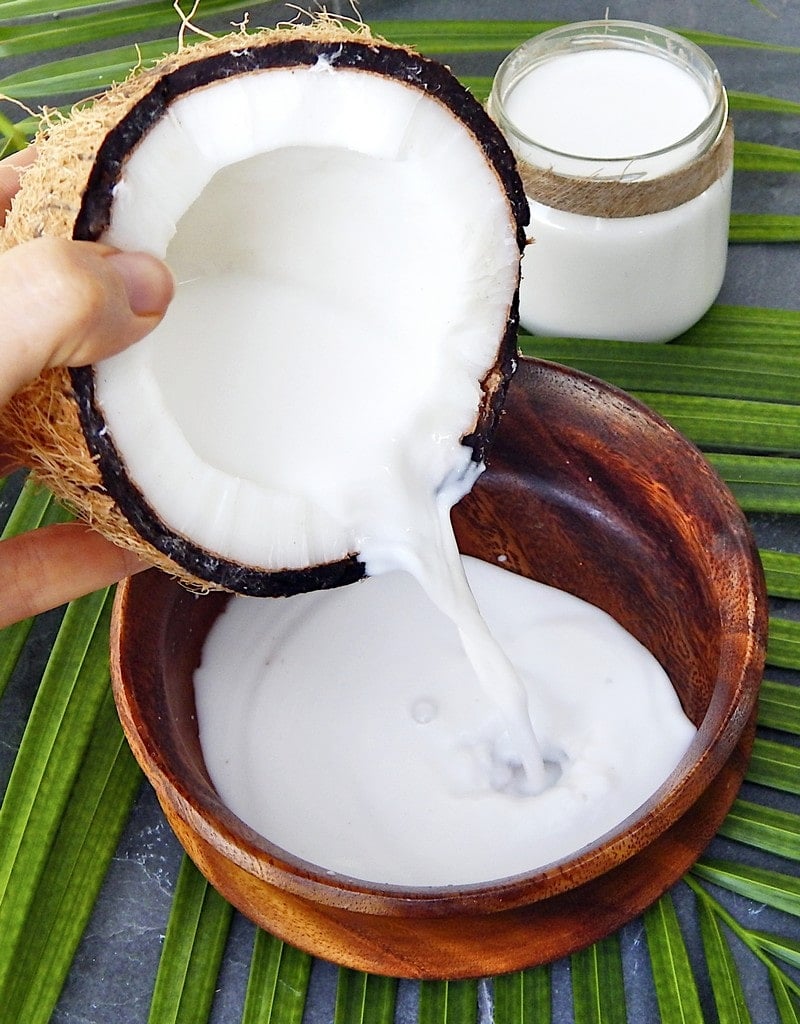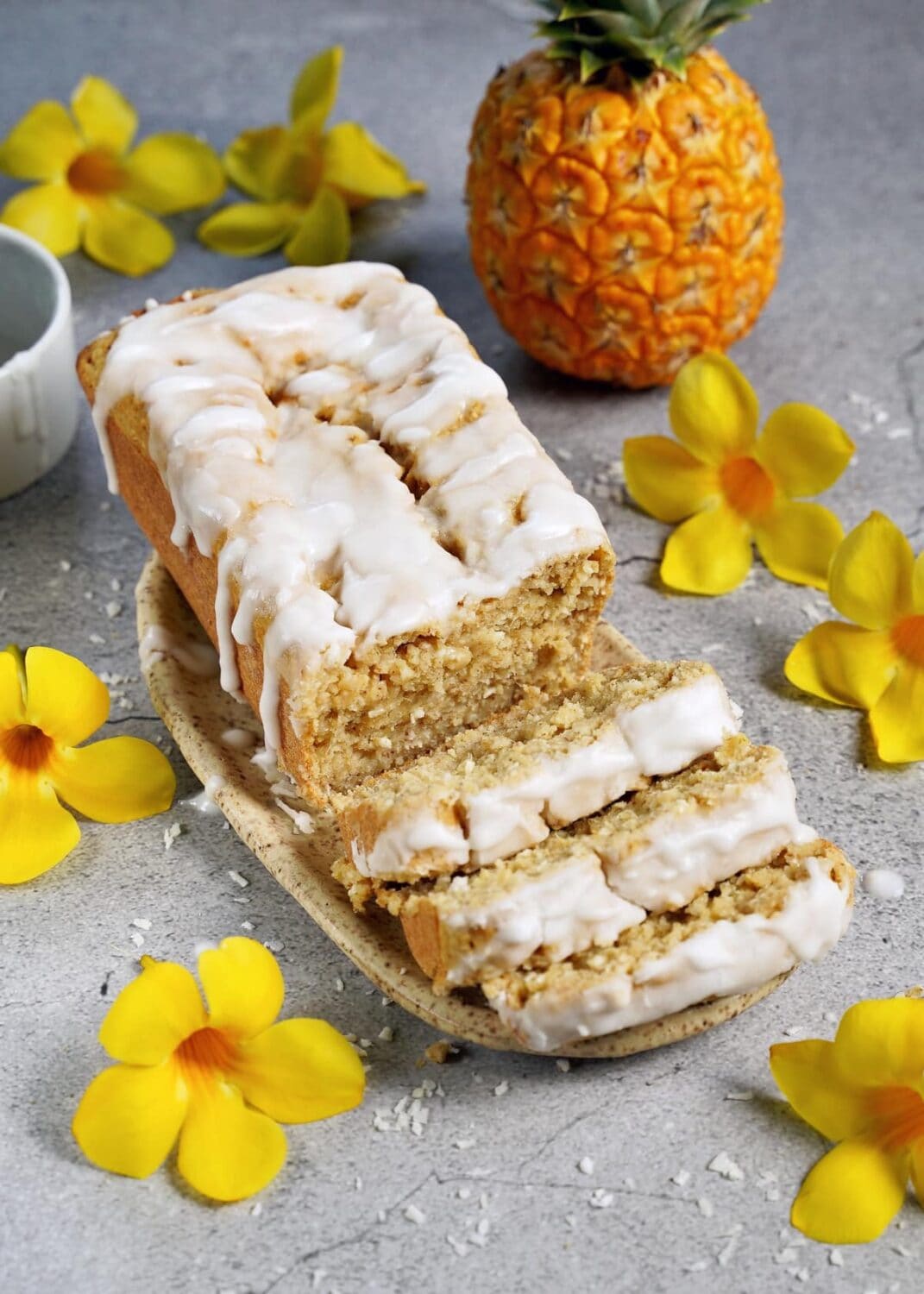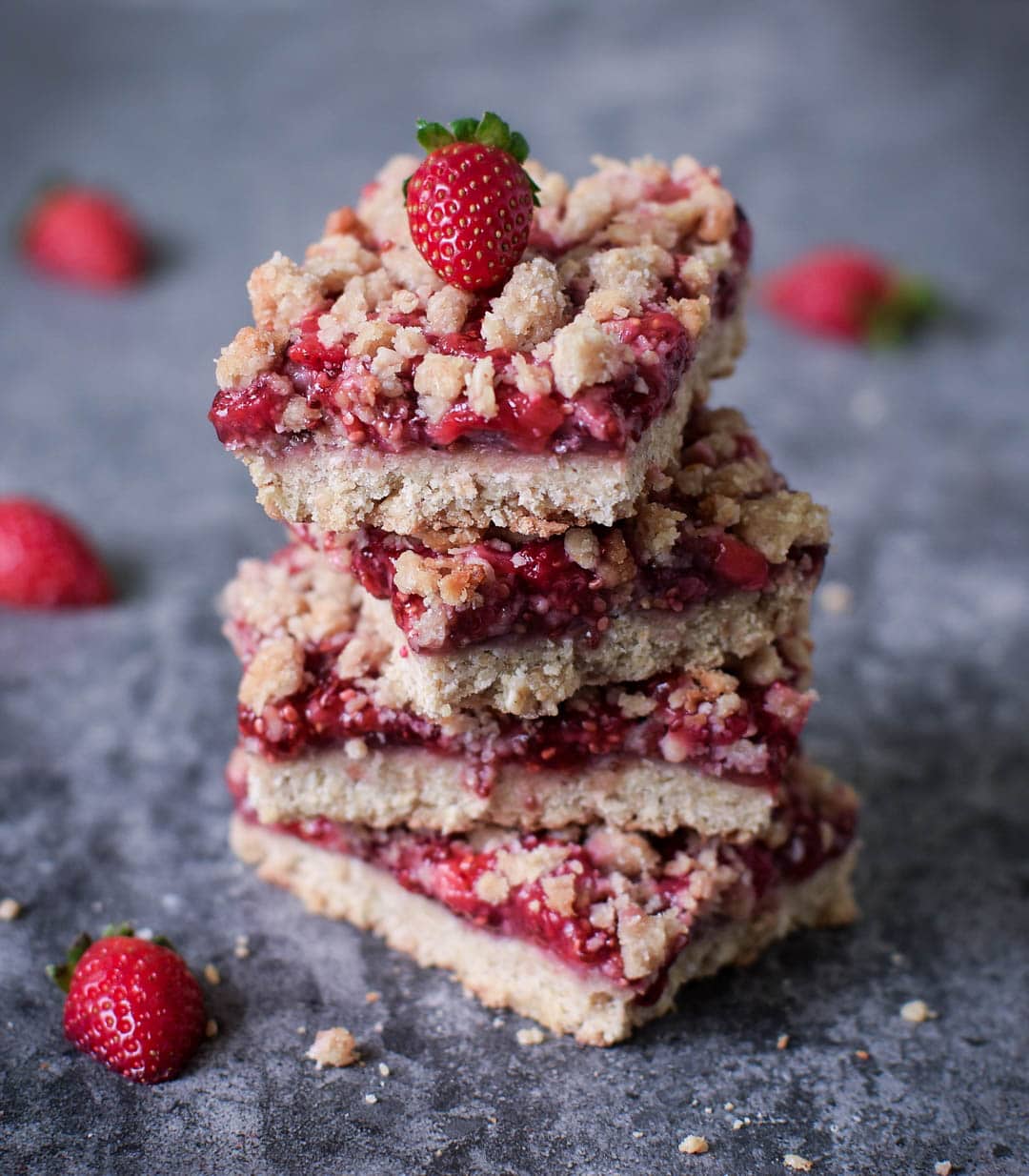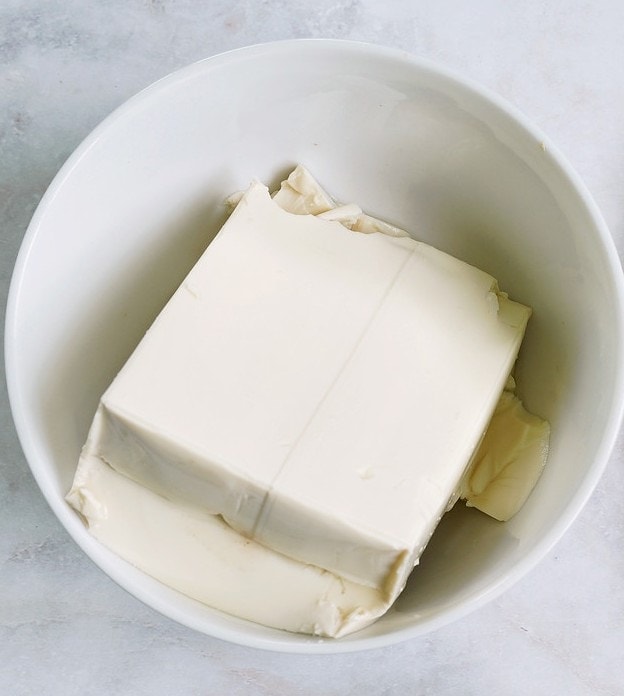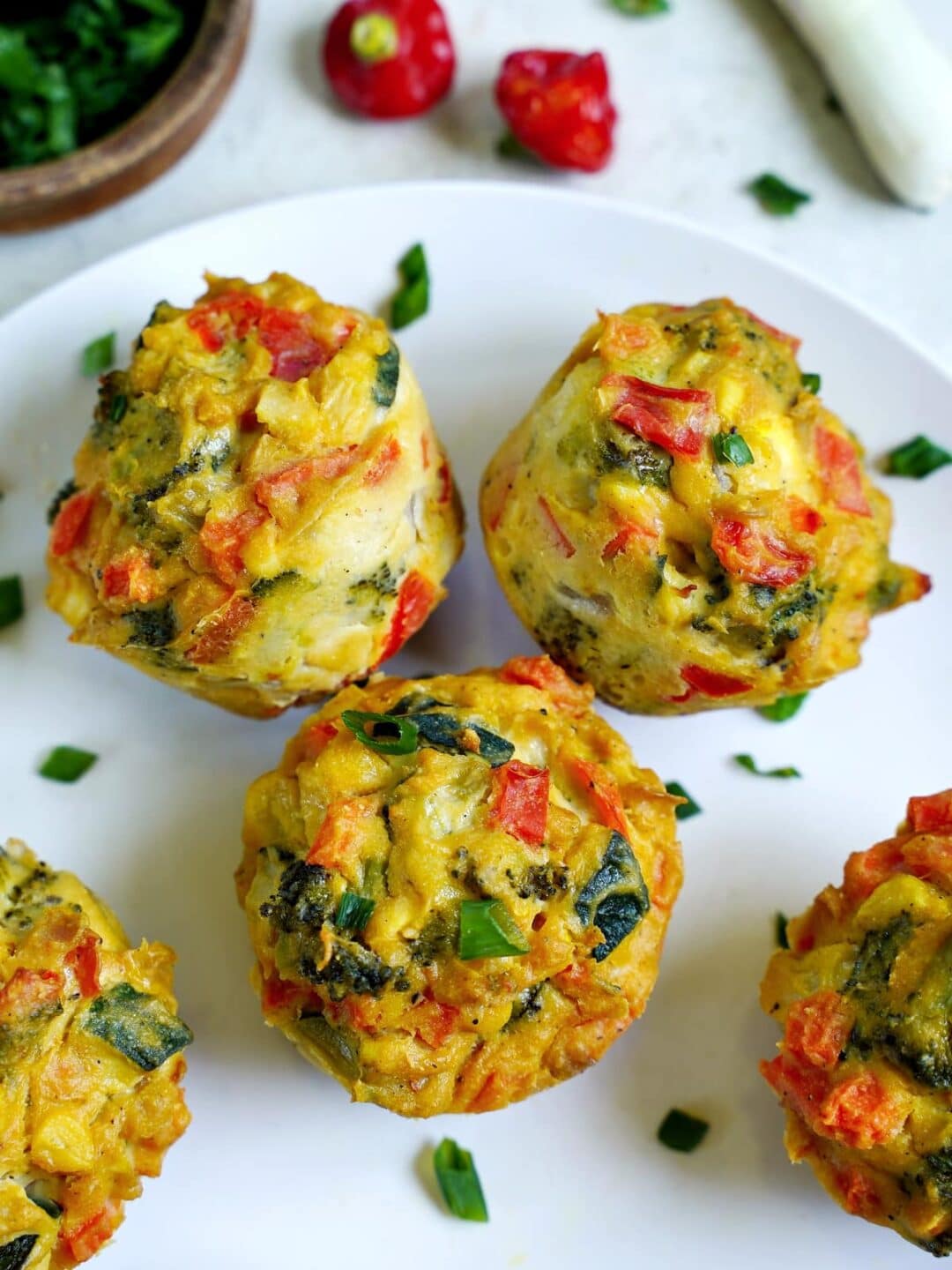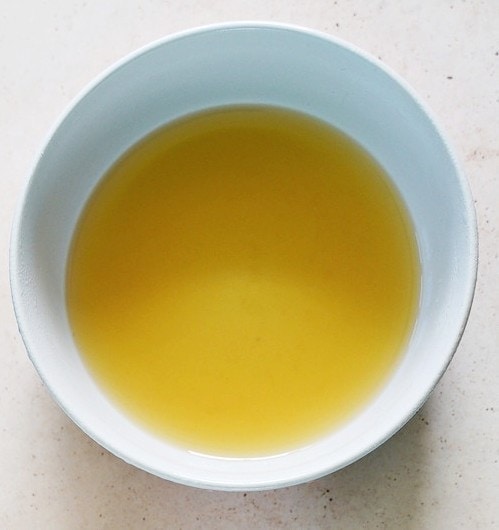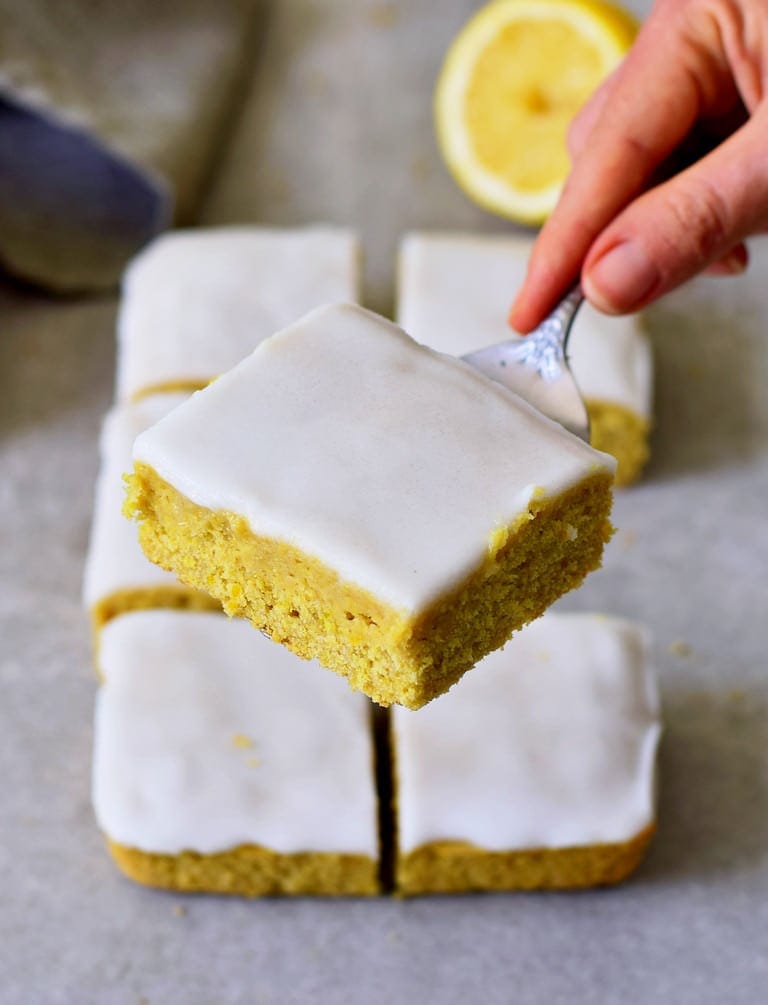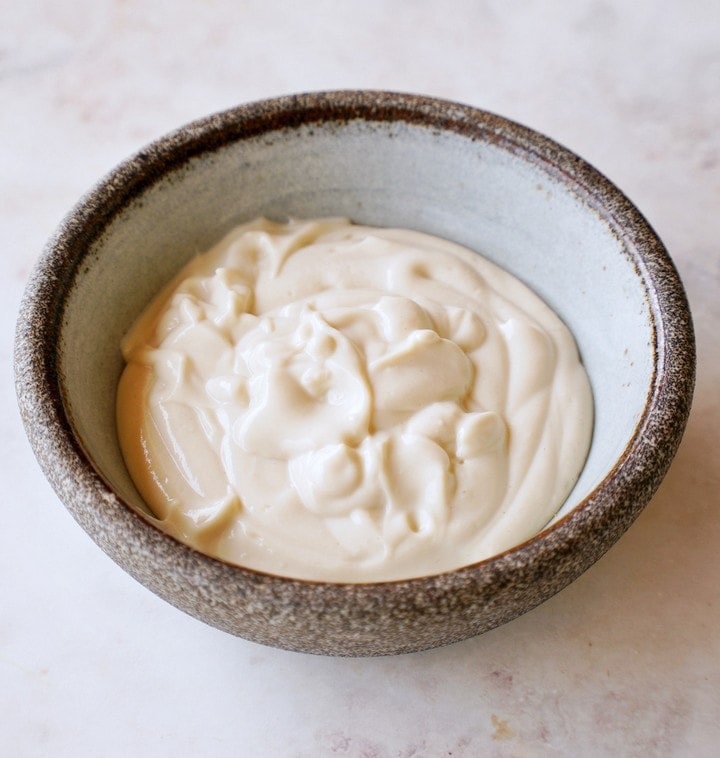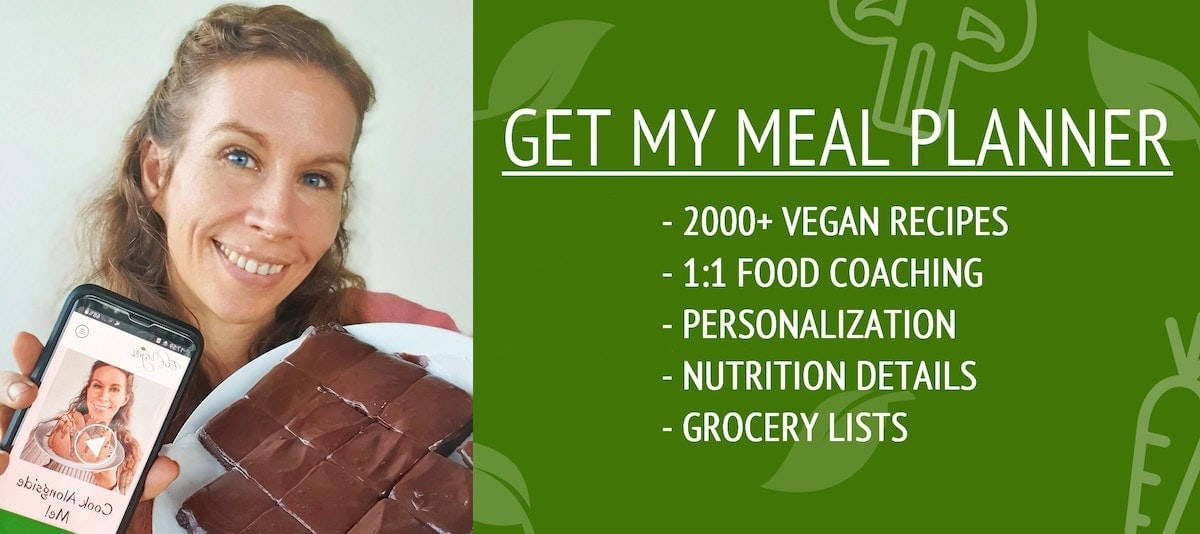Pin recipe
A list of the best baking oil alternatives to create moist, rich, and delicious bakes but with much healthier, less processed, and lower-calorie ingredients!
Whether you’ve run out of oil, are trying to limit your consumption, or are looking for a low-calorie alternative, there are several excellent, healthy oil alternatives. After doing all the research and lots of experience for you, I’ve put together this list of the best healthy alternatives to oil in baking, including recipes where I’ve used oil replacements in baking.
Why use baking oil, and why replace unhealthy oil?
I think it’s fair to say that most baking recipes contain fat in some form, be it liquid oil or butter/margarine. There are several main reasons why it is a baking staple:
- to add moisture: Oil, even more than butter (which contains some water that evaporates during baking), is one of the most important ingredients for super moist bakes that stay moist longer.
- For the best texture: It reduces gluten development by coating the dough, shortening the strands, and prevents water from evaporating during baking, which helps create a soft, even, tender crumb. Also, unlike solid fats (butter/vegetable shortening/coconut oil), liquid oils stay soft, whether stored on the counter or in the refrigerator.
- for prosperity: Depending on the type of fat you use (olive oil, butter, etc.), it can also affect the richness and impart additional flavor.
Although there are some heart-healthy oils (such as extra-virgin olive oil, avocado oil, or walnut oil), the most popular baking oils (ie, vegetable oils) are very low in nutritional value, are the most calorie-dense foods on the planet, and Often highly refined and/or high in unhealthy trans fats/saturated fats, which can lead to many health problems, including cardiovascular disease.
Fortunately, there are several vegetable oil alternatives in baking that are much healthier, allow you to avoid processed foods, have a fraction of the calories, and can even provide additional nutrients to your bake.
What to use instead of vegetable oil in cakes and bakes?
Here are the top oil alternatives for baking that you can use in regular, vegan, and gluten-free baking. Top tip: Note each time you use an oil substitute to see which recipes work well and which recipes need tweaking.
Unsweetened applesauce
Applesauce (unsweetened!) is a popular oil substitute for baking. It is commonly used in cakes, muffins, cupcakes, and brownies to mean moist and slightly dense (ie, not a crunchy cookie). It’s super moist, low in calories and adds subtle sweetness without overpowering the apple flavor.
To use applesauce when baking, use a 1:1 ratio (ie, 1/2 cup oil to 1/2 cup applesauce), and let the bakes cool for at least 15 minutes before moving or slicing them so they don’t break.
Recipes using applesauce:
Mashed bananas (and other purees)
Considering applesauce is a fruit puree, it’s not surprising that there are several other popular fruit and vegetable purees that you can use as an oil substitute in baking to add moisture and tenderness (with hidden nutrients!) to muffins, brownies, scones, breads, and more. can add etc
Fruit Puree: I especially use mashed bananas, but pear or apricot puree works too.
Vegetable purees: The two most popular versions I’ve seen (and used) are pumpkin puree and sweet potato puree. Avocado puree (although technically a fruit) also works well and has lots of heart-healthy fats for richness.
They work just like applesauce, but affect flavor and color more. It can work well in most cases though, adding extra flavor to muffins and cakes. Bakes made with fruit/vegetable purees will also be denser than solid fat purees, as they won’t ‘aerate’ the batter.
For using purees, I don’t recommend a direct 1-to-1 swap. Instead, I use somewhere around 50-75%. That is, for everyone 1/2 cup oil, I use between 1/4-1/3 cup. Please note, if using puree for cookies, they will be more puffy/cake-like vs. crispy.
Recipes using pumpkin puree:
Recipes using mashed bananas:
Recipes using other purees:
Seed or nut butter
Natural seed and nut butters, such as peanut butter, almond butter, cashew butter, and sunflower seed butter, are all healthy, low-processed fats (especially if you use or make versions that contain only nuts and sometimes a little salt) for baking. Make a great vegetable oil substitute.
When blended into a butter, the nut solids separate from their oils to form a ‘paste-like’ texture, and these natural oils replace processed oils in your bakes for a rich and delicious result. Just remember that they’re more likely to add flavor to your bakes than the other oil substitutes on this list. The amount you need to use when replacing oil with almond butter can vary based on individual recipes. It works great for making thin/crispy cookies, tarts and brownies.
Recipes using nut or seed butter:
Canned coconut milk
Canned coconut milk is a rich, creamy, and fairly high-fat liquid that makes a delicious and impressive oil substitute in baking. However, it will often add a subtle coconut flavor to your baking.
To use coconut milk in place of oil, you also need to consider liquids in the recipe. For example: 1 cup coconut milk will replace 1/4 cup oil + 3/4 cup liquid (milk, water, etc.). I find it works best in recipes where another main ‘moist’ ingredient is used.
Recipes using coconut milk:
More oil substitutions for baking
There are several other healthy vegetable oil substitutes for brownies, cakes and bakes that I have tried with success. These include:
Silken Tofu:
Silken tofu is loaded with protein, can be blended to a puree consistency, then used as an oil substitute (eggs or) in cakes, cupcakes, cookies, muffins, brownies, etc. with strong flavors (such as chocolate or coffee).
To replace the oil with silken tofu, I recommend using 1/3 cup silken tofu for every 1/2 cup oil Asked for a recipe. I often use it to make Delicious vegetable muffins.
Aquafaba:
Aquafaba is the liquid that comes in cans of chickpeas (or from cooking chickpeas). The smell is very neutral, and its slightly thick, viscous texture is oil-like(ish). Best of all, though, it’s loaded with nutrients like iron and folate.
I usually use aquafaba as an egg replacement (especially when whipping, like mine Peanut butter mousse) than oil, although it would technically work as both. To replace oil with aquafaba, Use equal parts aquafaba to oil Baked like cakes, muffins, cookies and bars/slices (although they won’t be ‘rich’). I used it to do mine Lemon Sheet Cake.
Dairy-free yogurt
There are several dairy alternatives that people can use to replace oil, but in vegan baking, I’ve only tried dairy-free yogurt. Yogurt adds moisture and richness while keeping far fewer calories than oil. If it’s particularly acidic, it can also react with the leavening agent for fluffier bakes.
I suggest using curd instead of oil Using a 1:1 ratio (slightly less if you use a super thick curd). Just remember that if the flavor of the curd is too tangy, it will carry over into the bake.
If you try any of these recipes using oil substitutes in baking, I’d love one Comment and ★★★★★ Recipe rating in their posts. Also, please don’t forget Tag me in a re-creation on Instagram or Facebook with @ellavegan And #Elvegan– I love to see them.
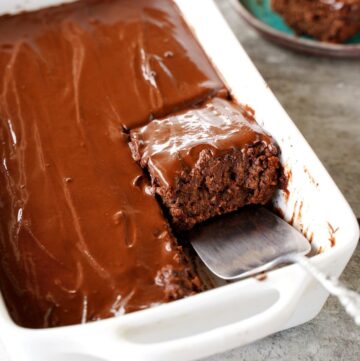
Oil Substitutes in Baking: Chocolate Baked Oats
Healthy yet decadent Chocolate Baked Oats are a quick, easy and delicious one-pan dessert or breakfast your whole family will love! Plus, this Brownie Baked Oatmeal is refined-sugar-free, dairy-free, egg-free, oil-free and gluten-free!
material
Chocolate cream (see note)
instructions
-
You can watch the video in the post for visual instructions.First, preheat the oven to 350F/175C and lightly grease a 6×9-inch (15x23cm) or similar-sized baking pan.
-
Then, mash the bananas directly in the baking pan using a fork (or potato masher).
-
Add the rest of the baked oatmeal ingredients and mix into a batter.
-
Transfer the baking dish to the oven and bake for about 25 minutes. The exact time will depend on the size of pan you use (ie, the thickness of the oatmeal).To test if the baked chocolate oatmeal is set, insert a toothpick into the center. It should come out clear.
-
Then, remove the pan from the oven and let cool for at least 10 minutes.
-
Meanwhile, prepare the chocolate cream by combining all the ingredients in a medium bowl and whisking until smooth and creamy.
-
Pour the chocolate cream mixture over the baked oatmeal and (optionally) transfer the pan to the fridge until the layer is slightly firm – then enjoy!
Comment
- Banana: If you don’t want to use banana, use pumpkin puree.
- Nut Butter: You can use almond butter or any other nut butter. Use sunflower seed butter for a nut-free version.
- Milk: Any dairy-free milk is fine, such as almond milk, cashew milk, coconut milk, oat milk, soy milk, etc.
- Oats: I used quick oats, but rolled oats would also work well.
- Chocolate layer: If you prefer a firmer chocolate layer, melt 2 bars of dark chocolate (about 100g each) with a little coconut oil and use that instead of my oil-free chocolate layer.
nutrients
Oil Substitutes in Baking: Chocolate Baked Oats
No. per job
% Daily Value*
* Percent Daily Value is based on a 2000 calorie diet.
Nutritional information is an estimate and has been calculated automatically
If you use PINTEREST, feel free to pin the photo below:
